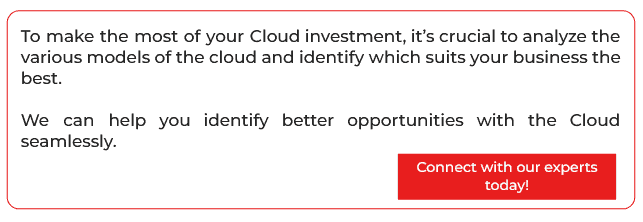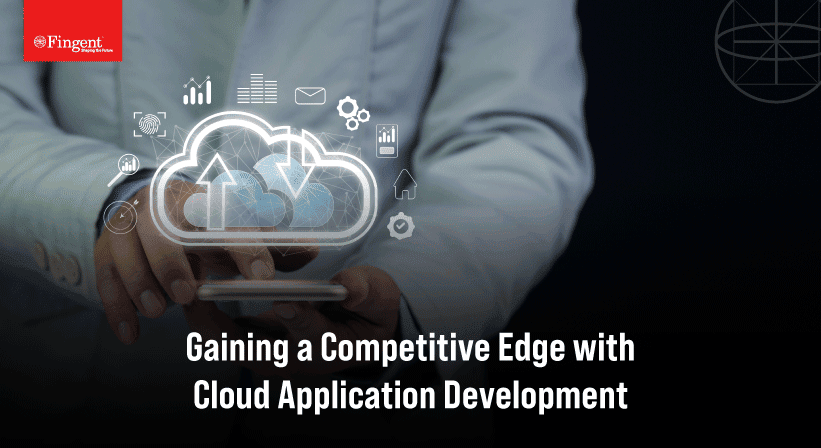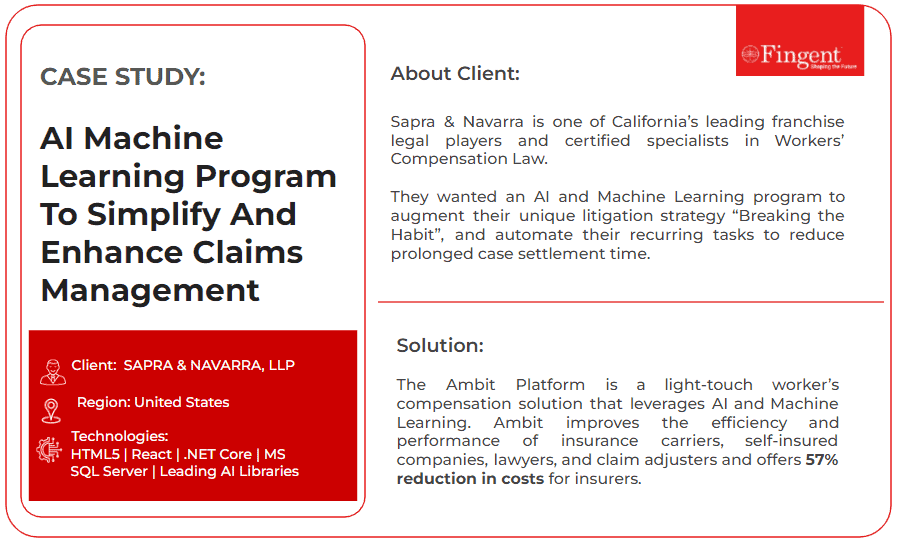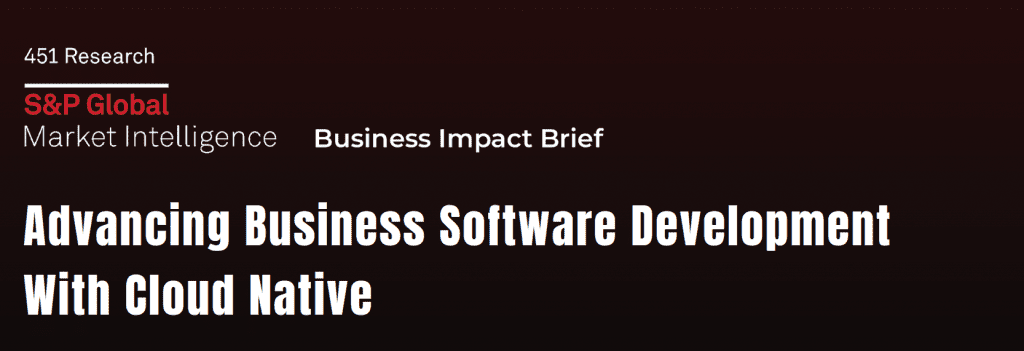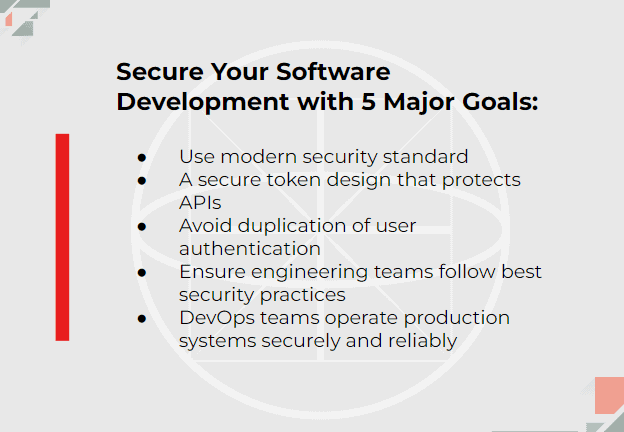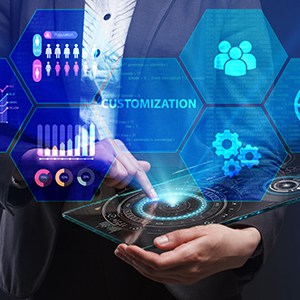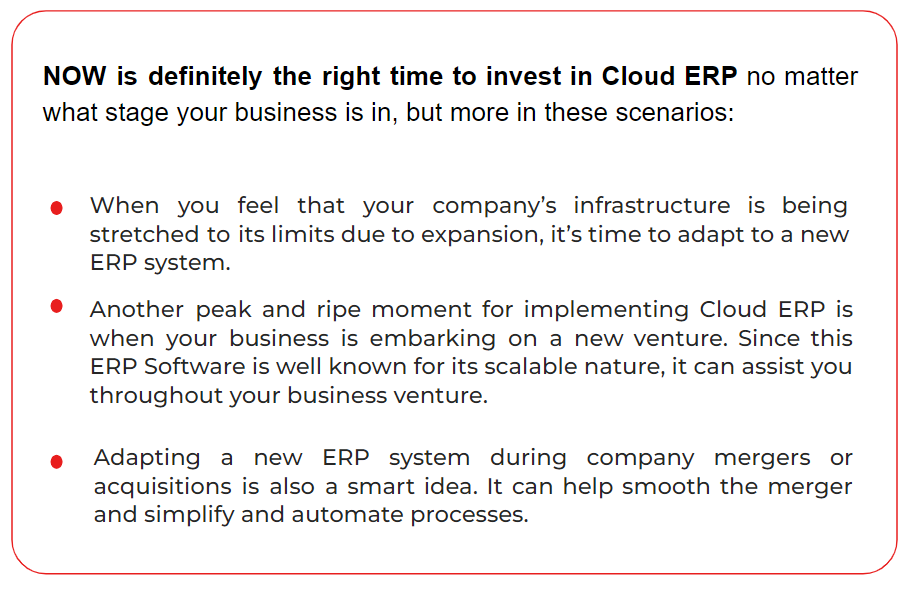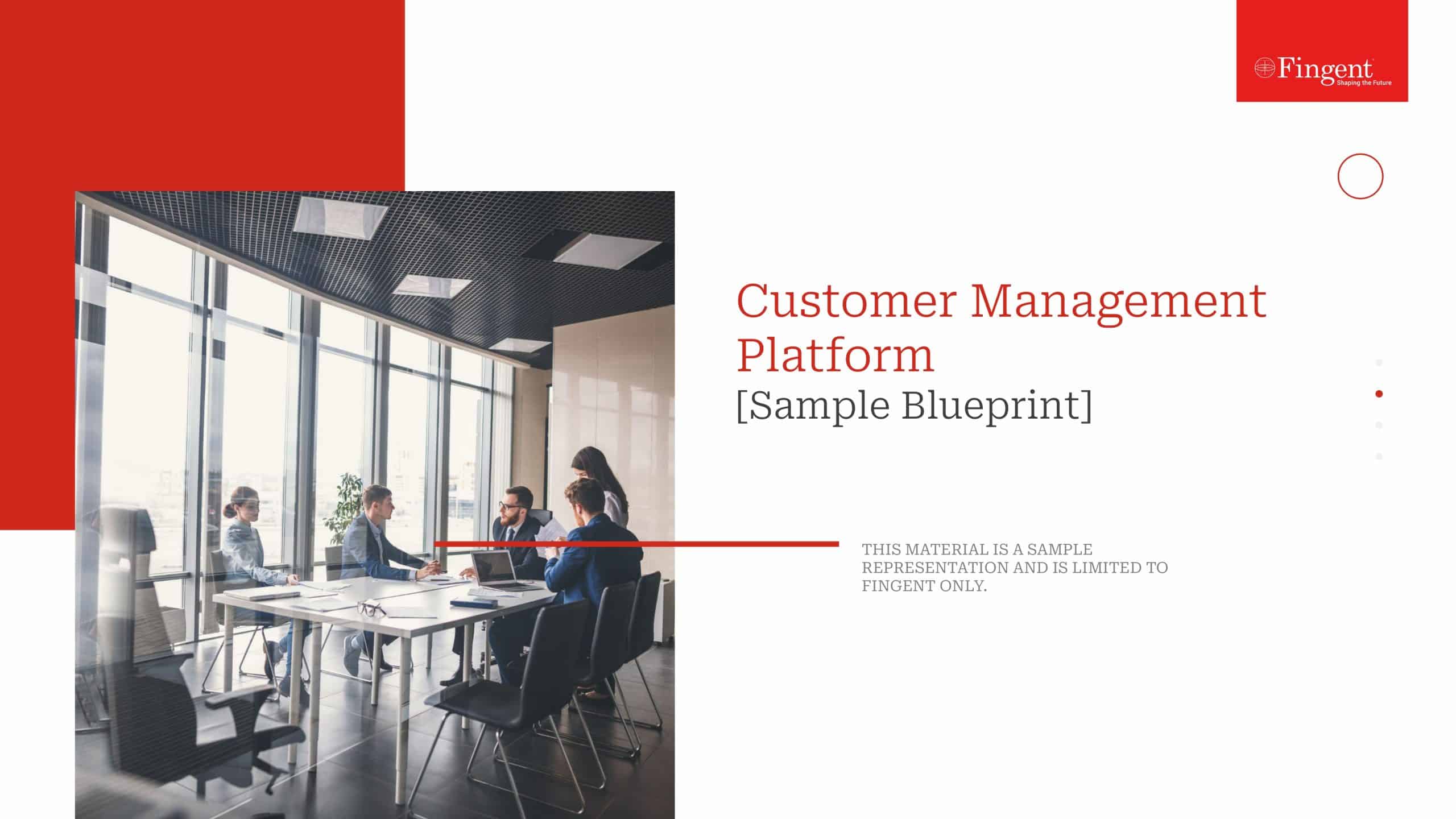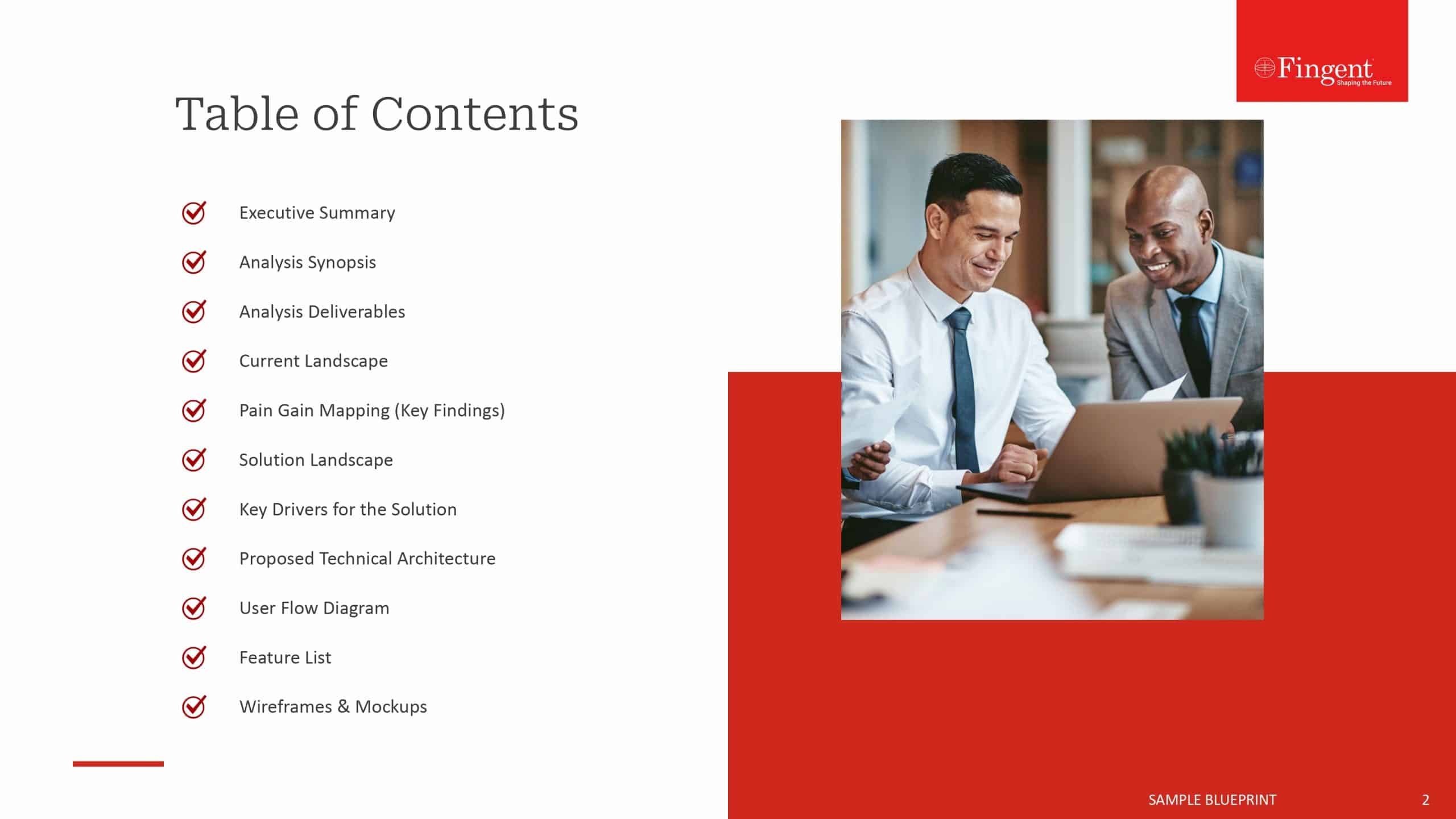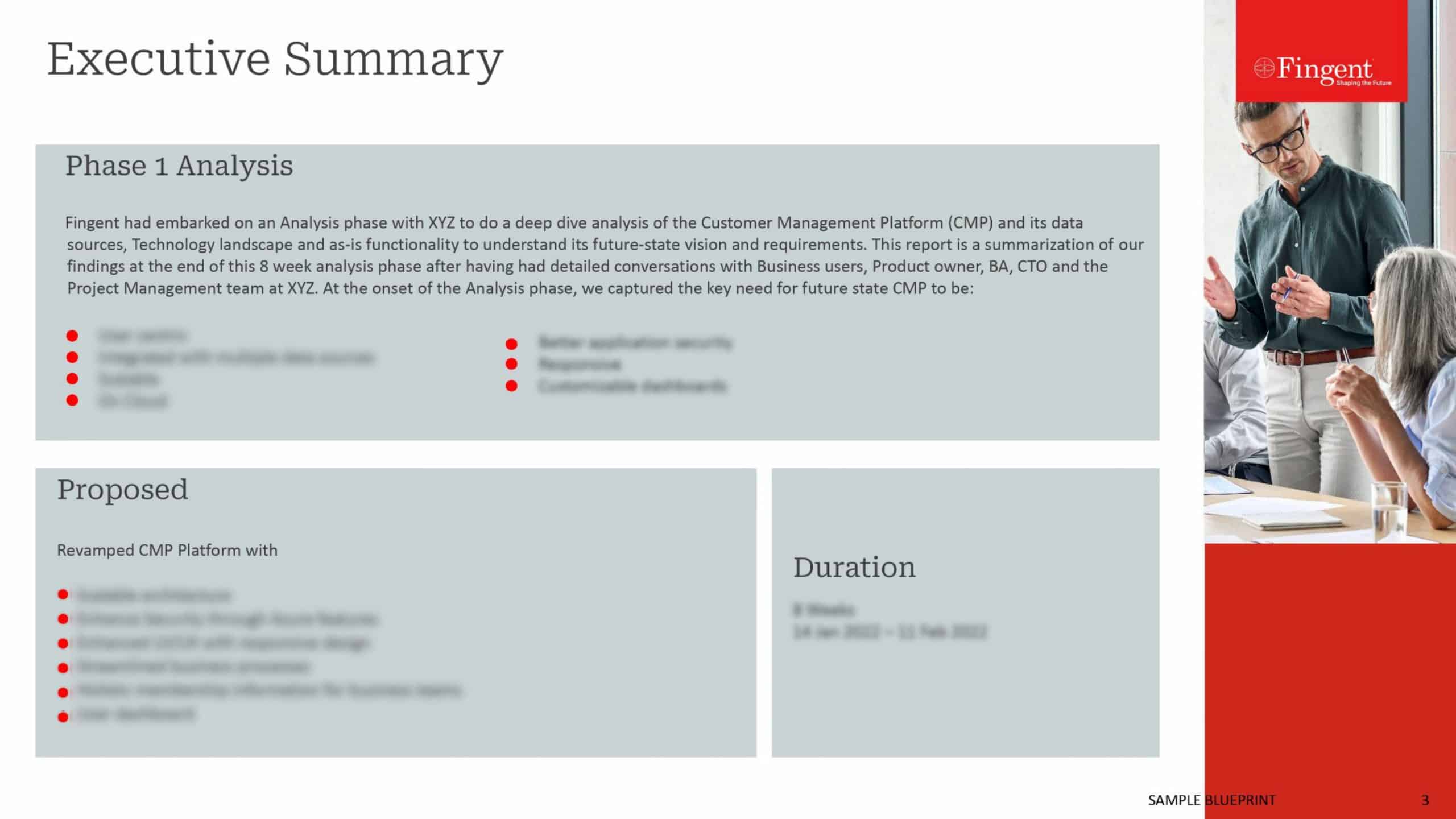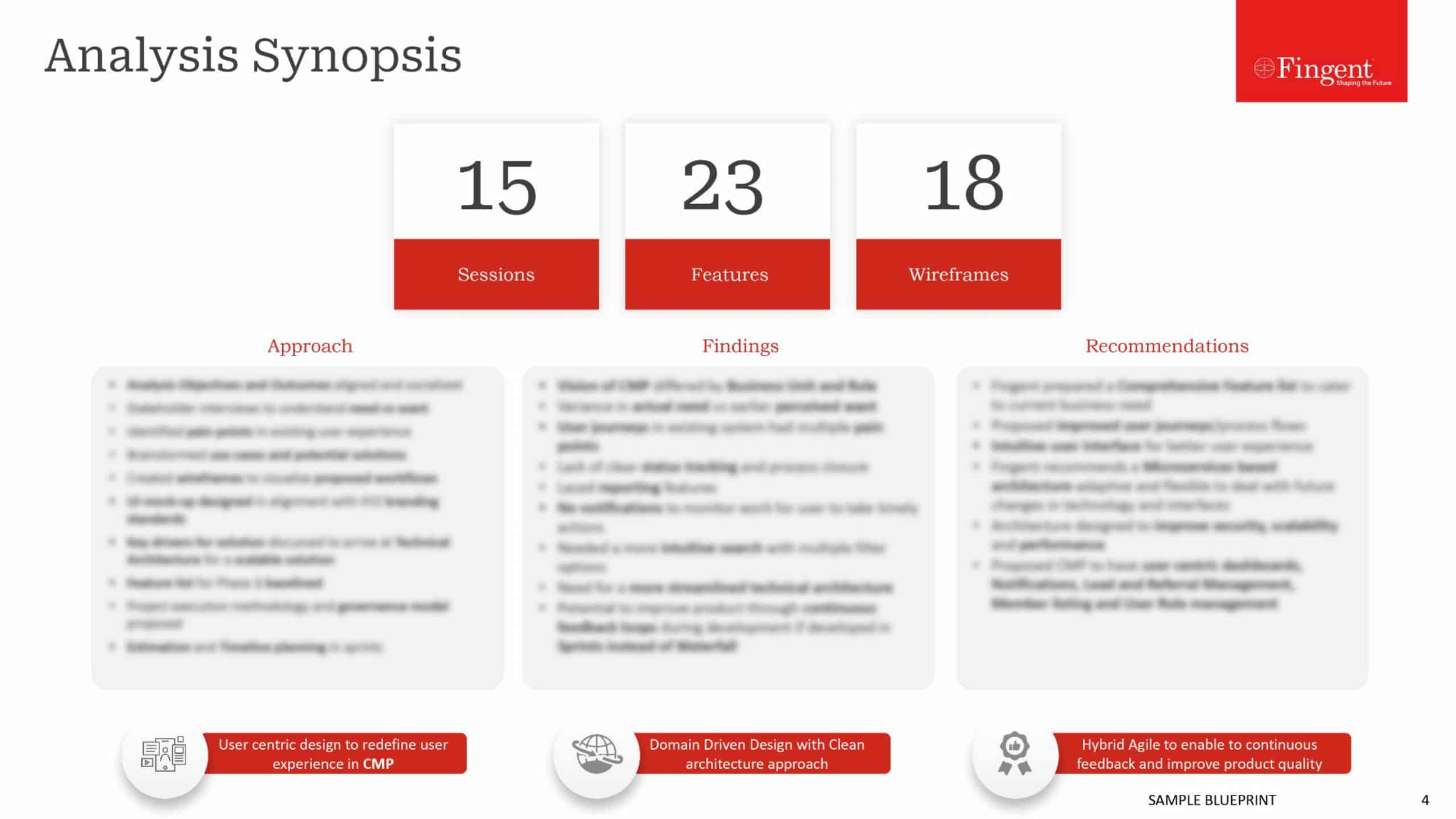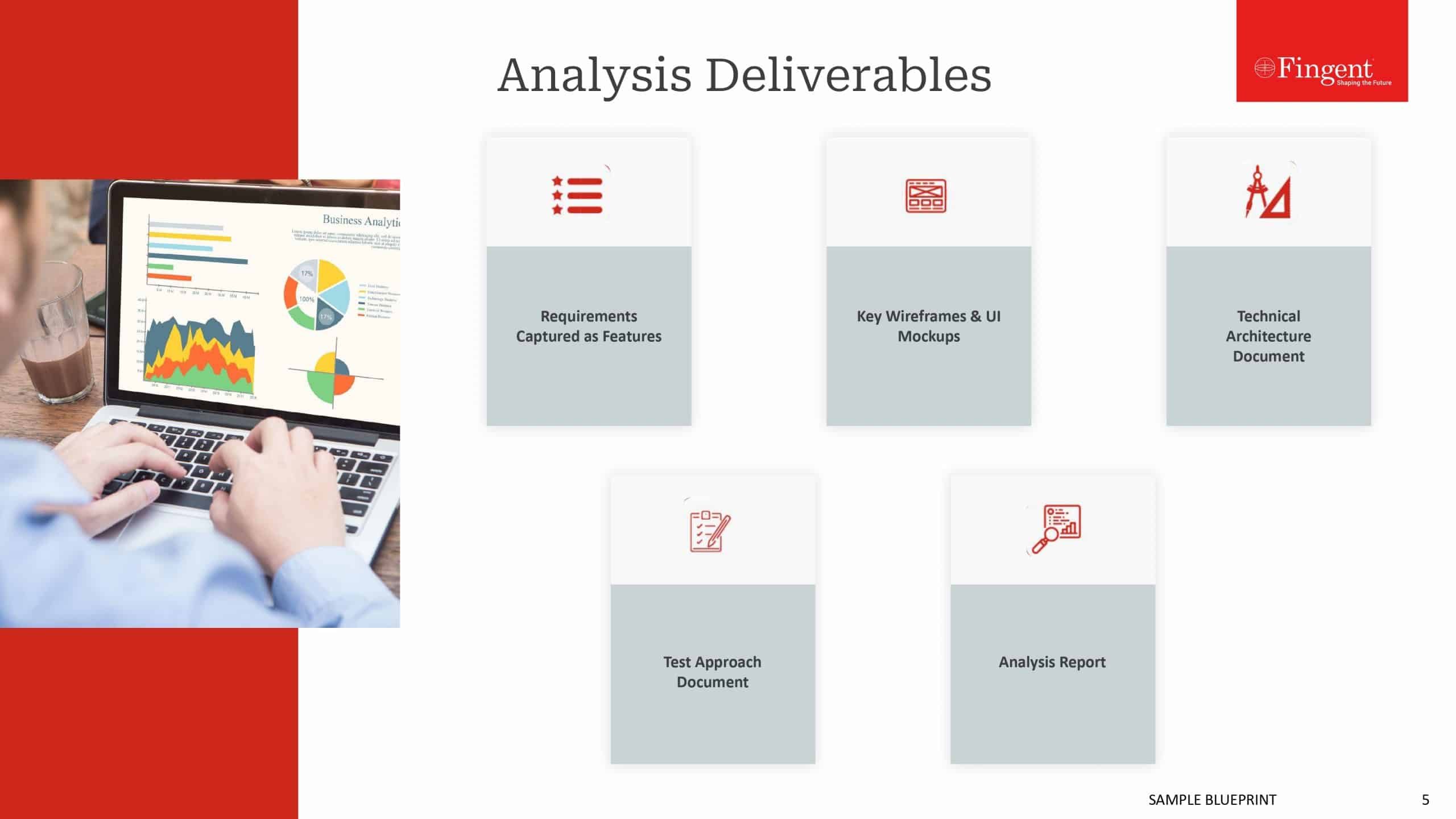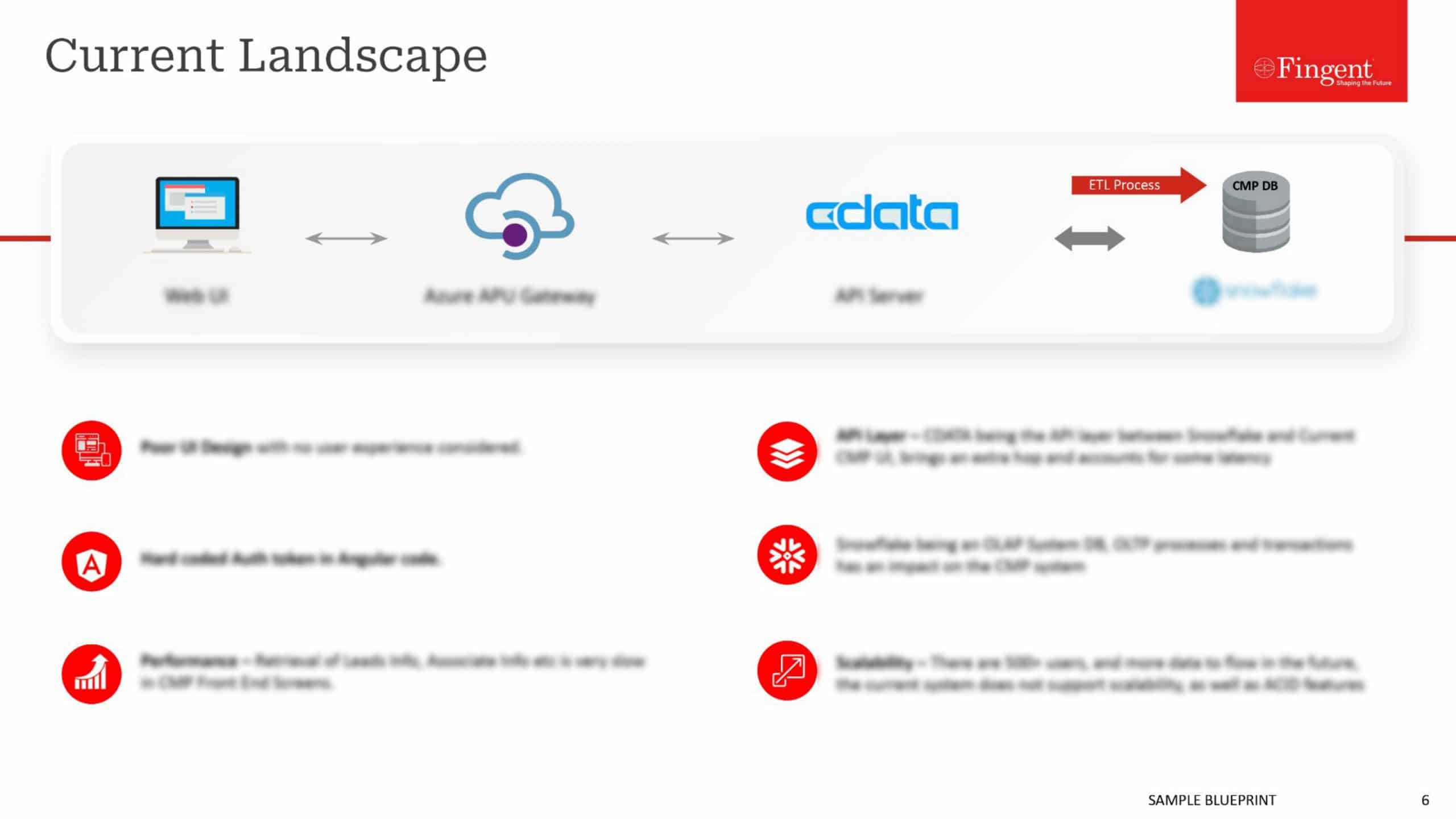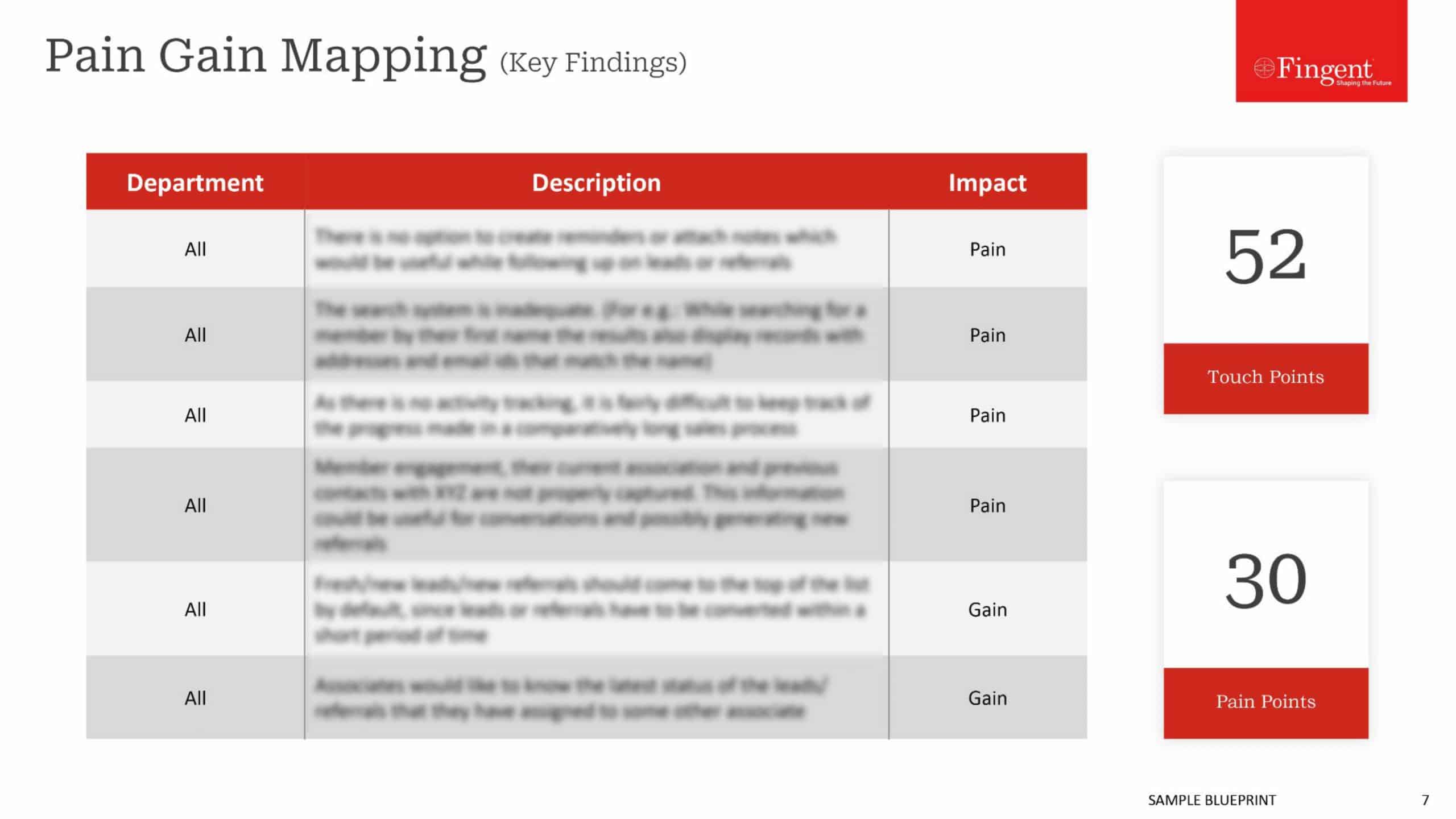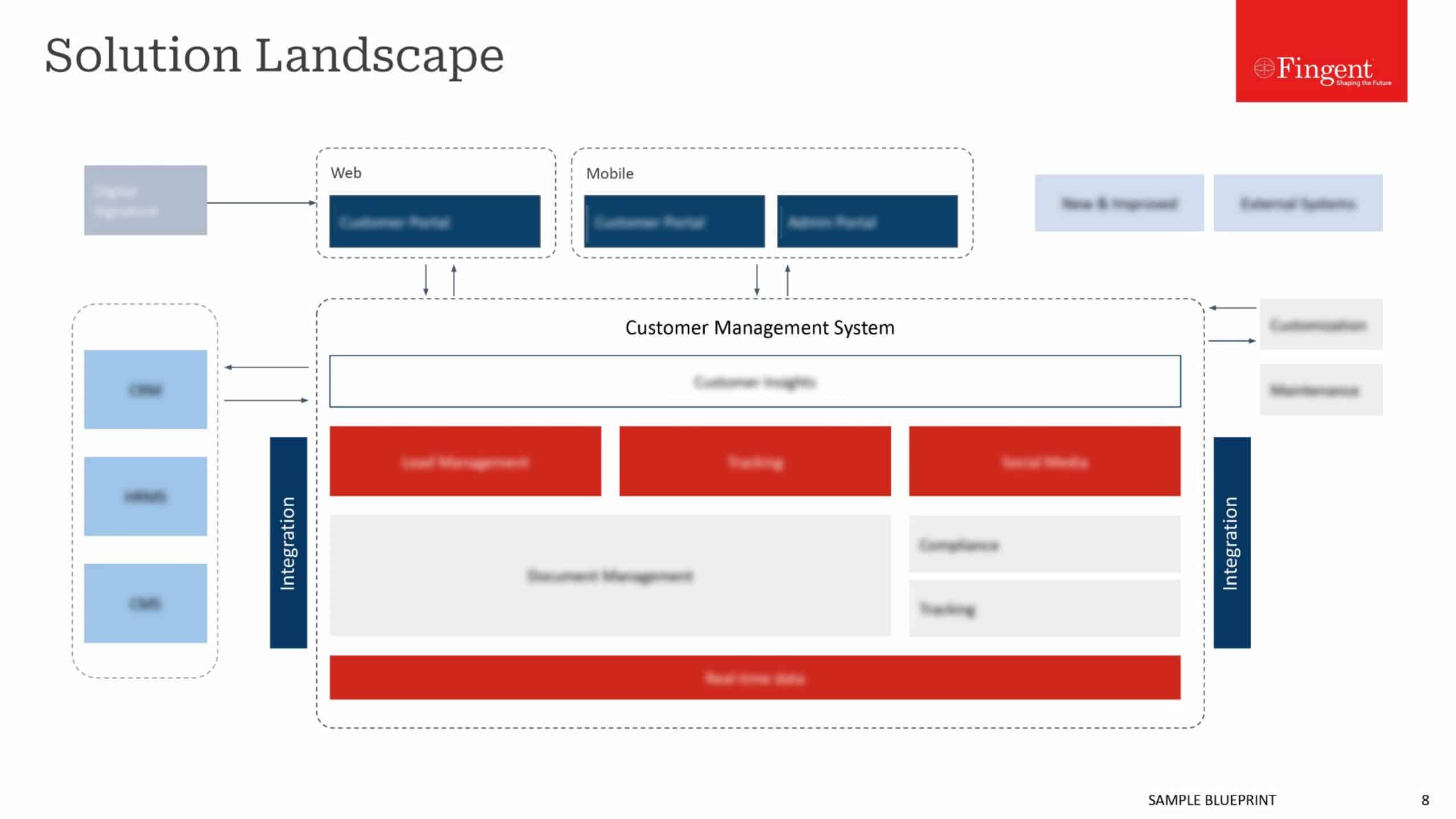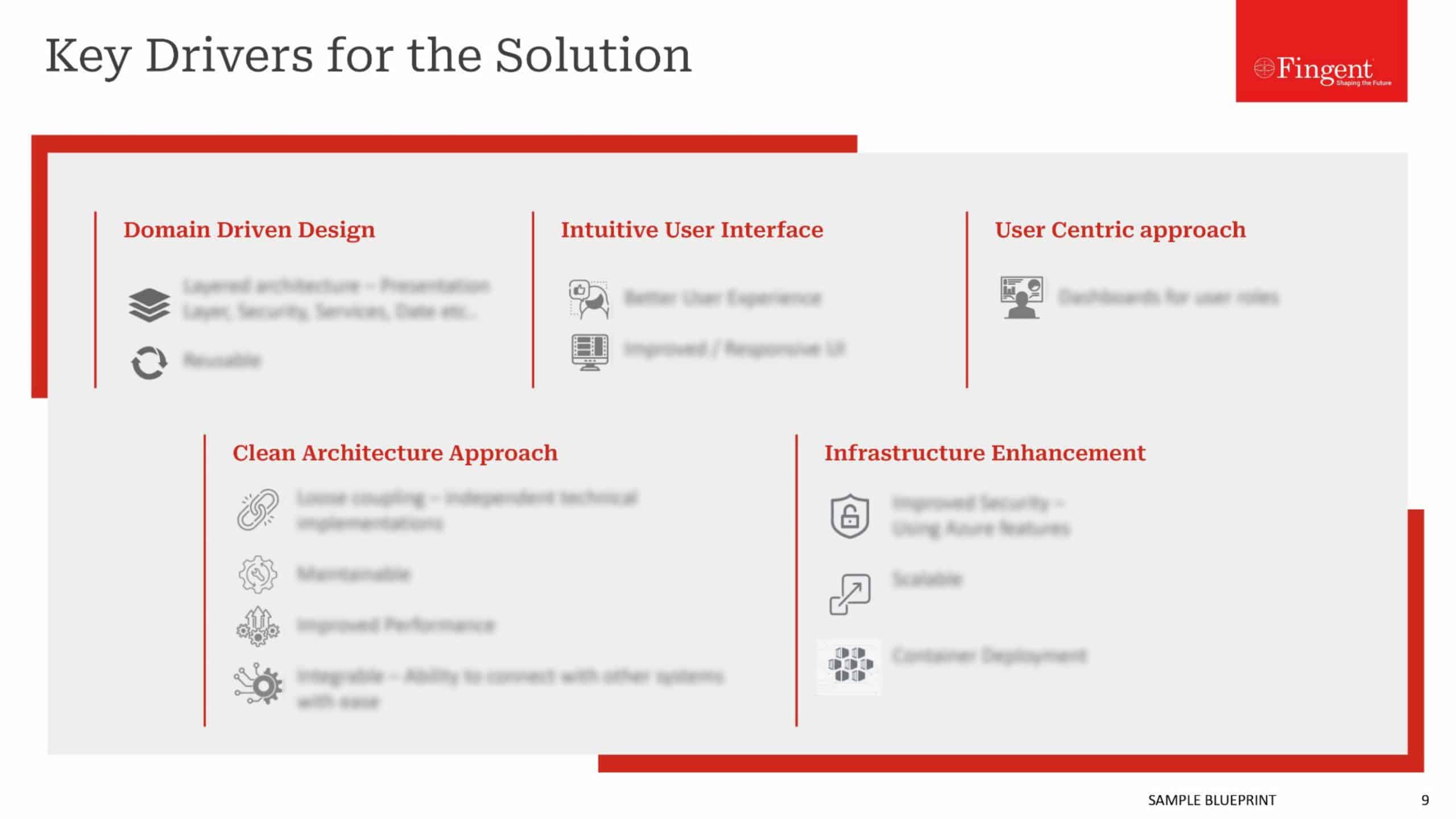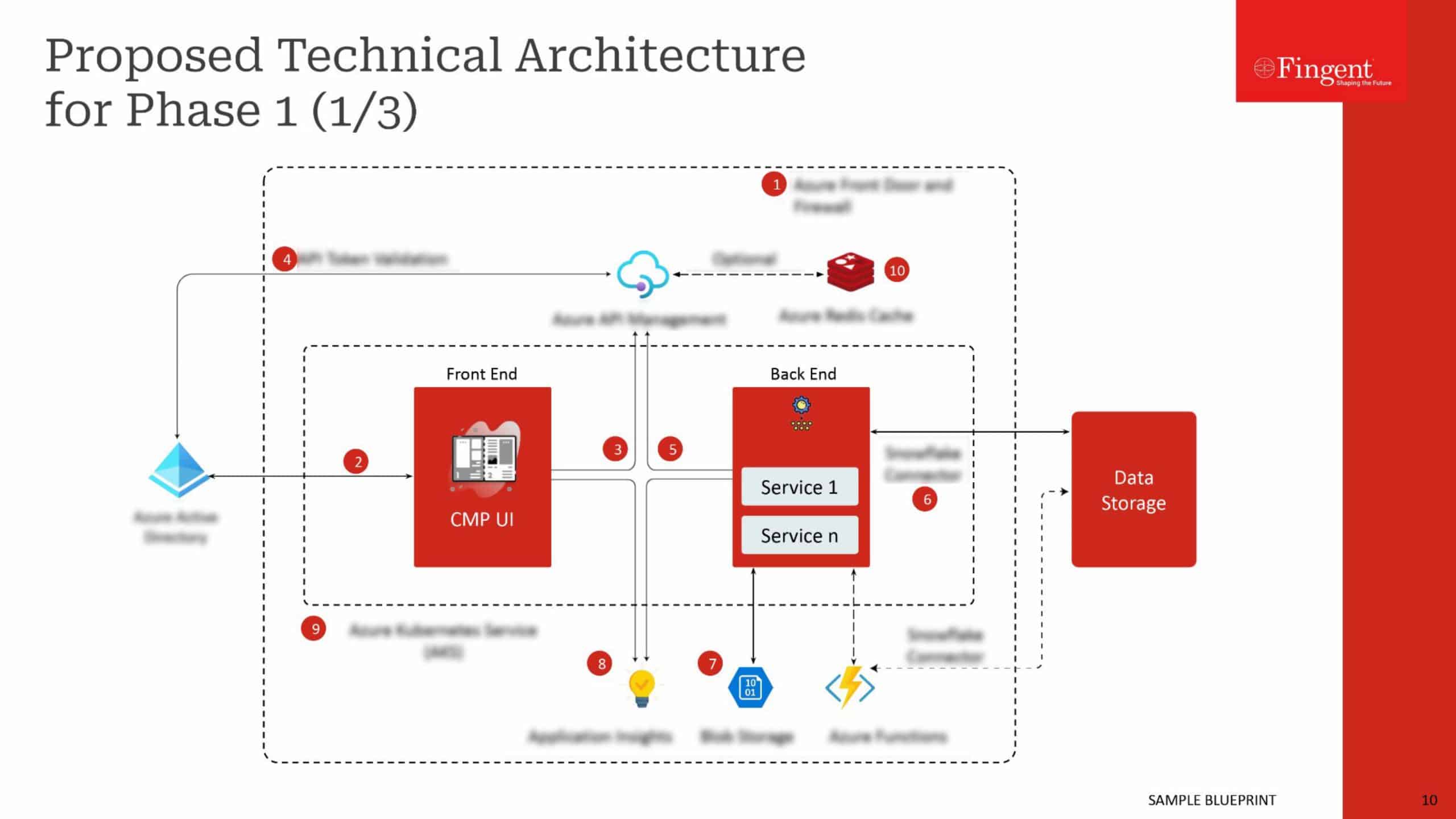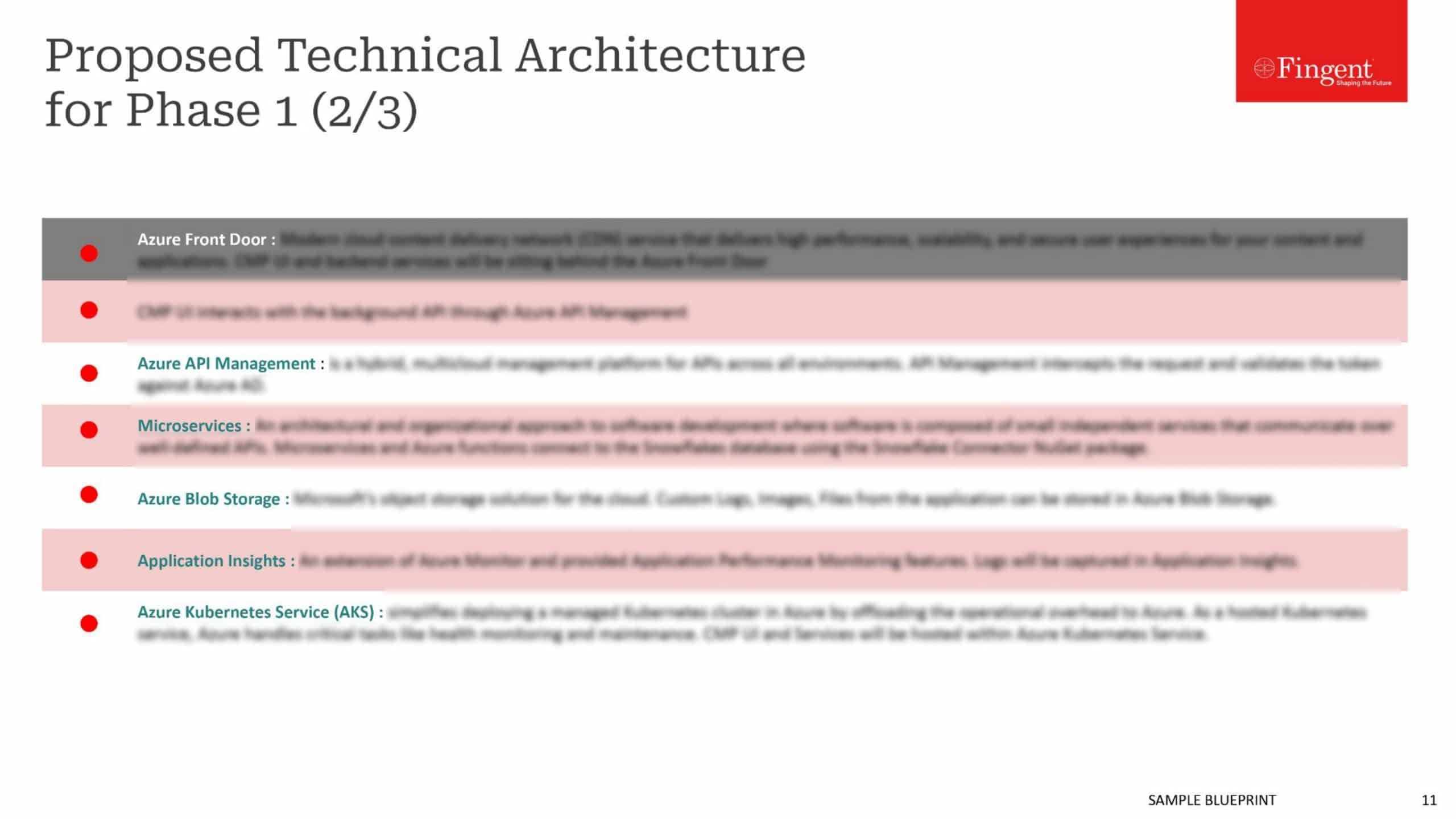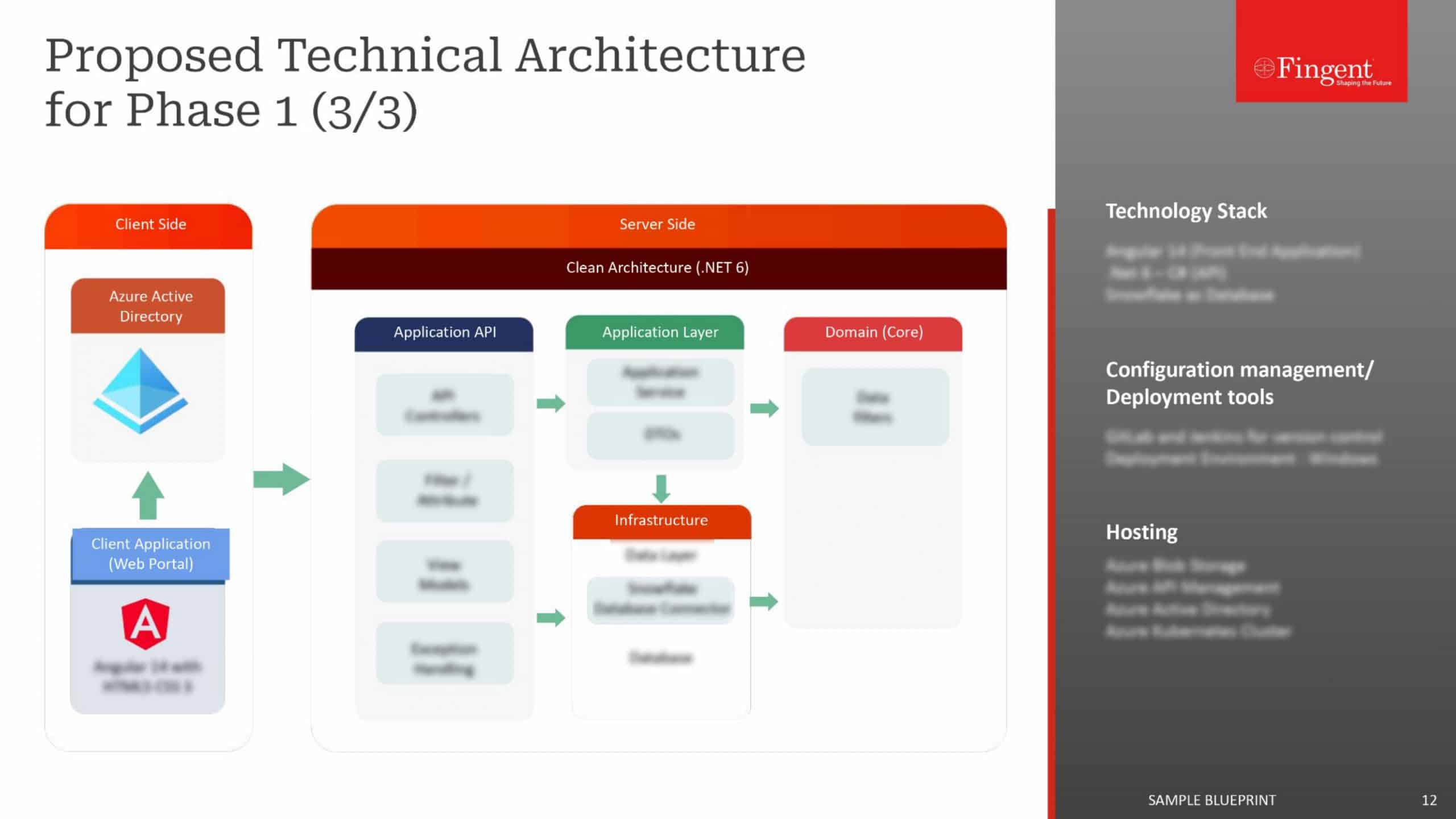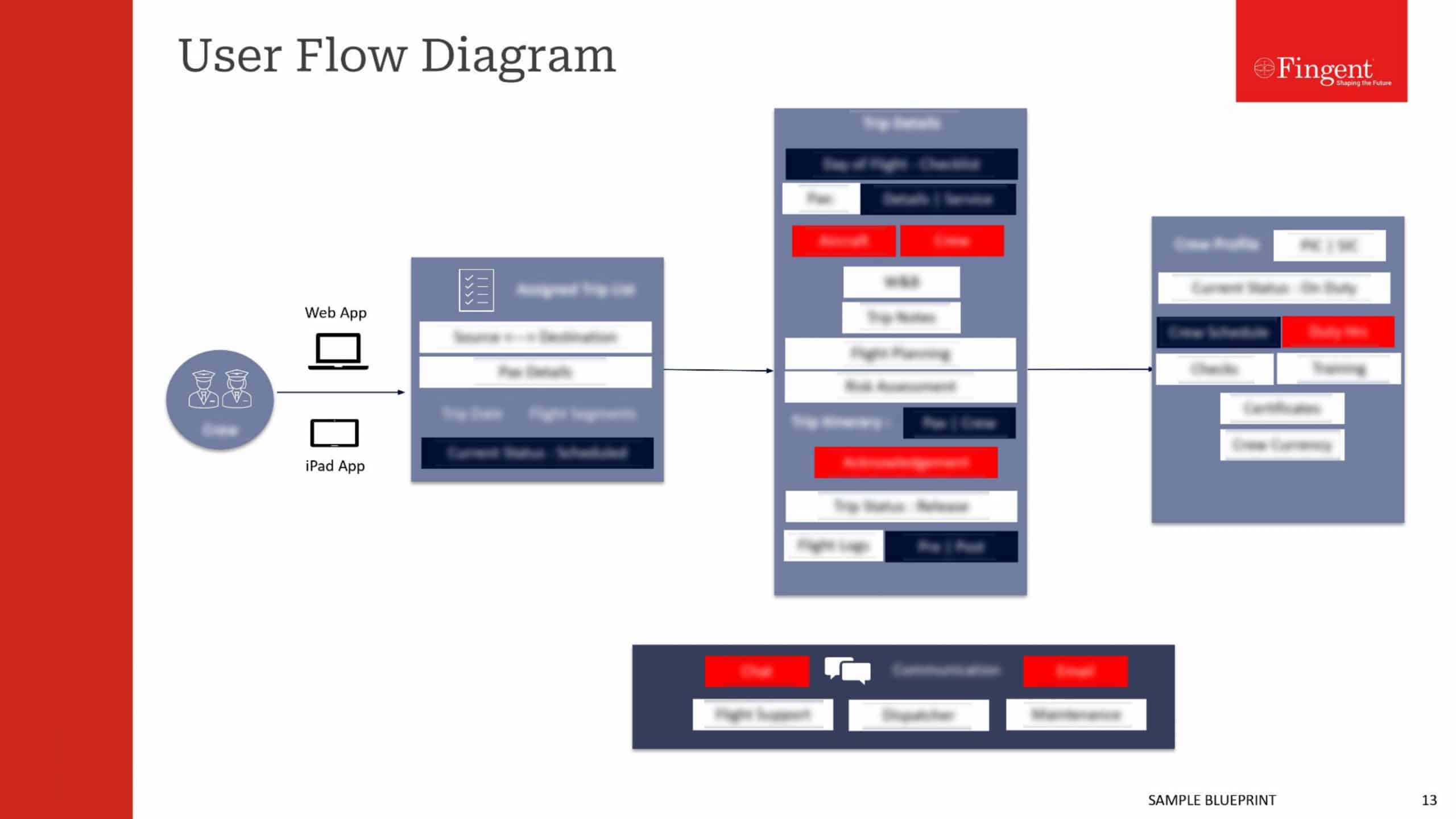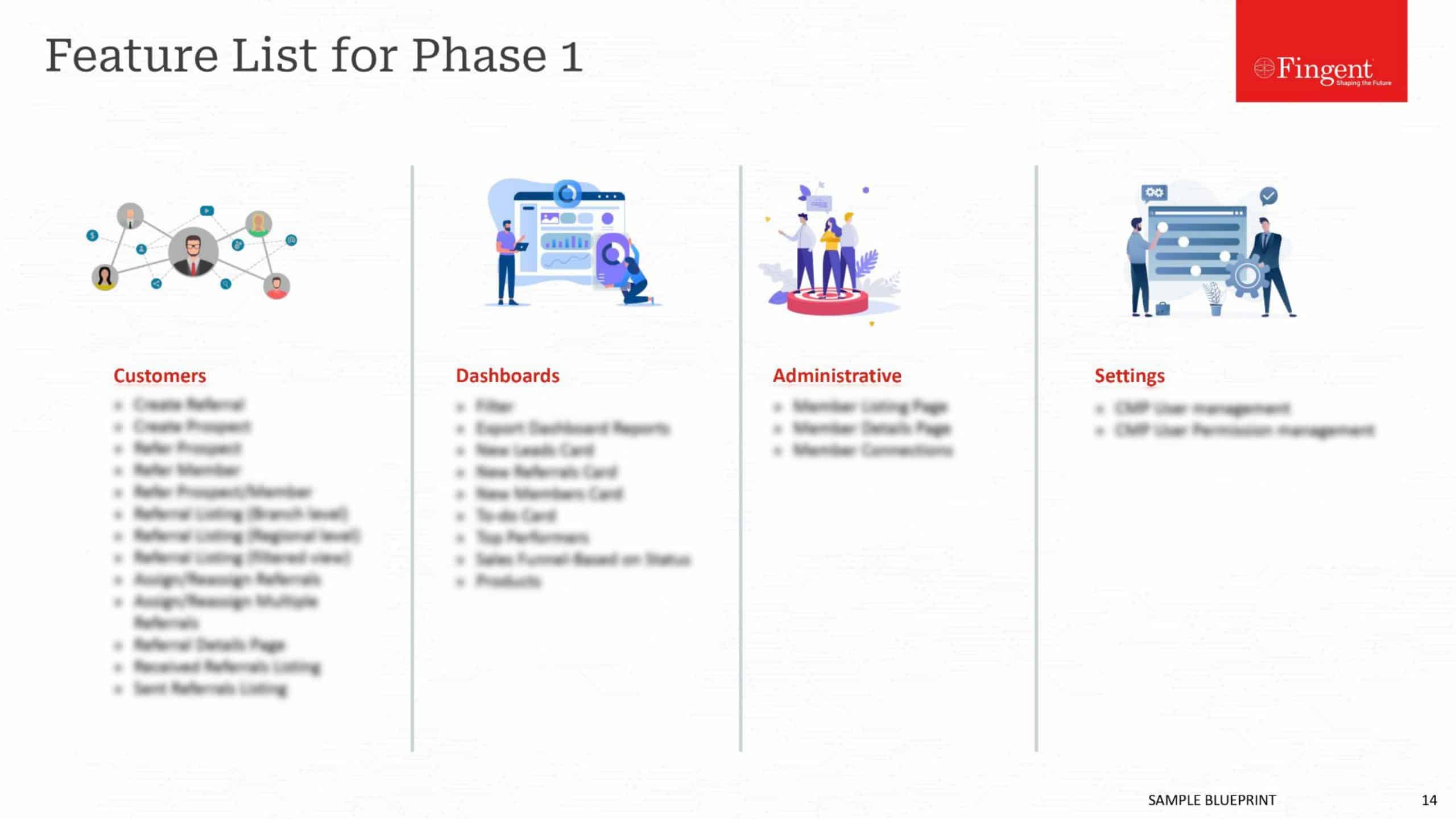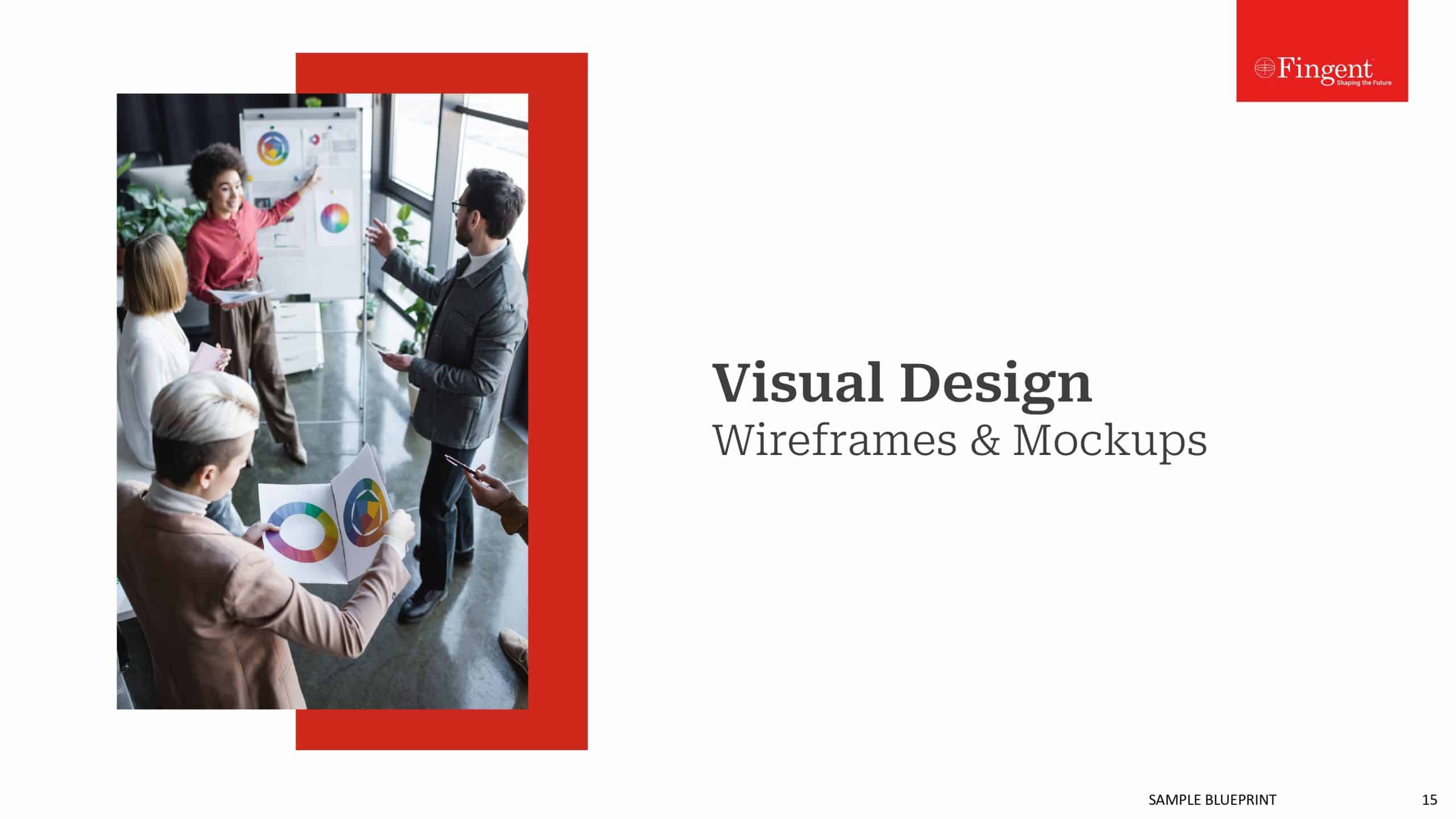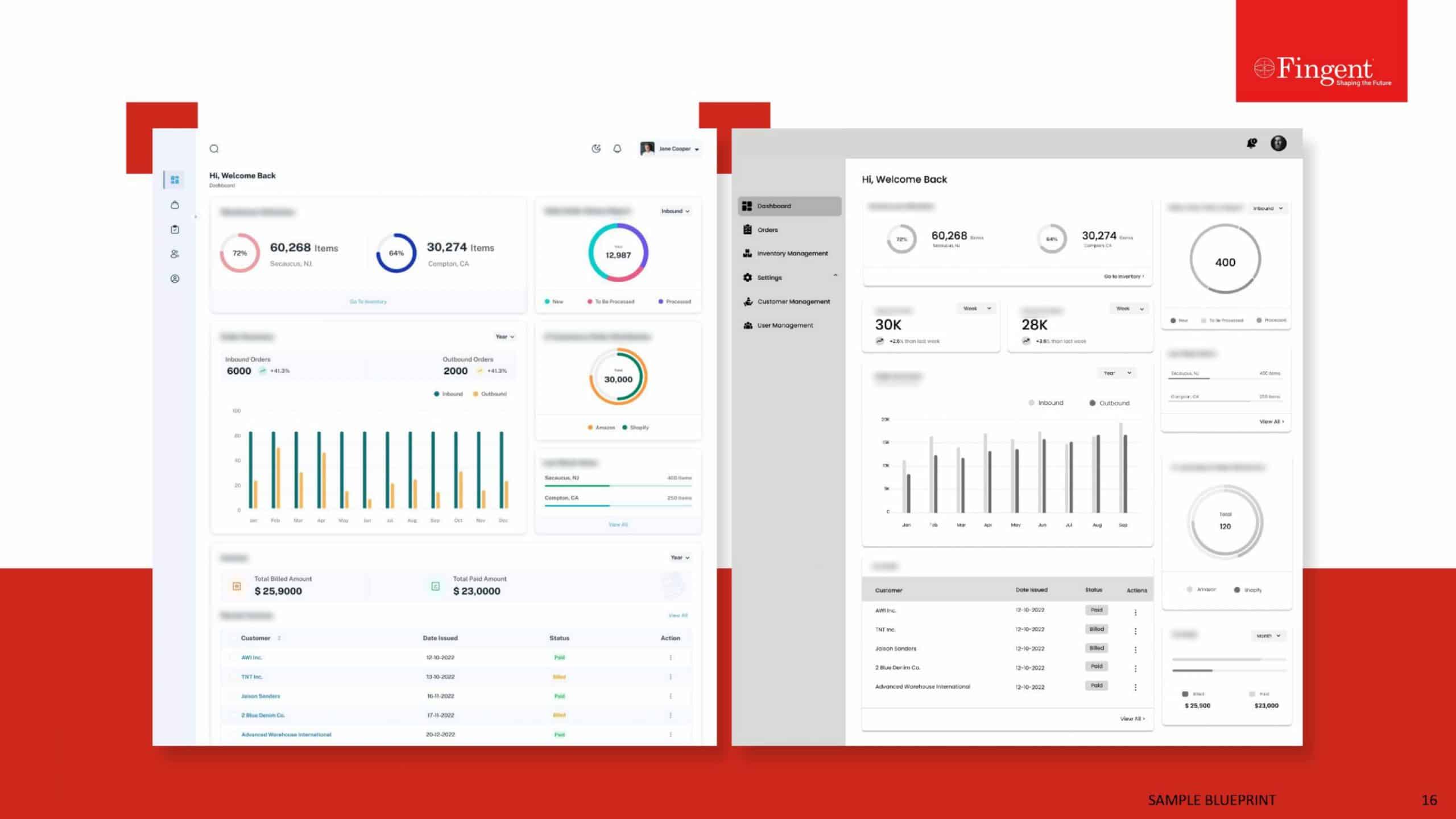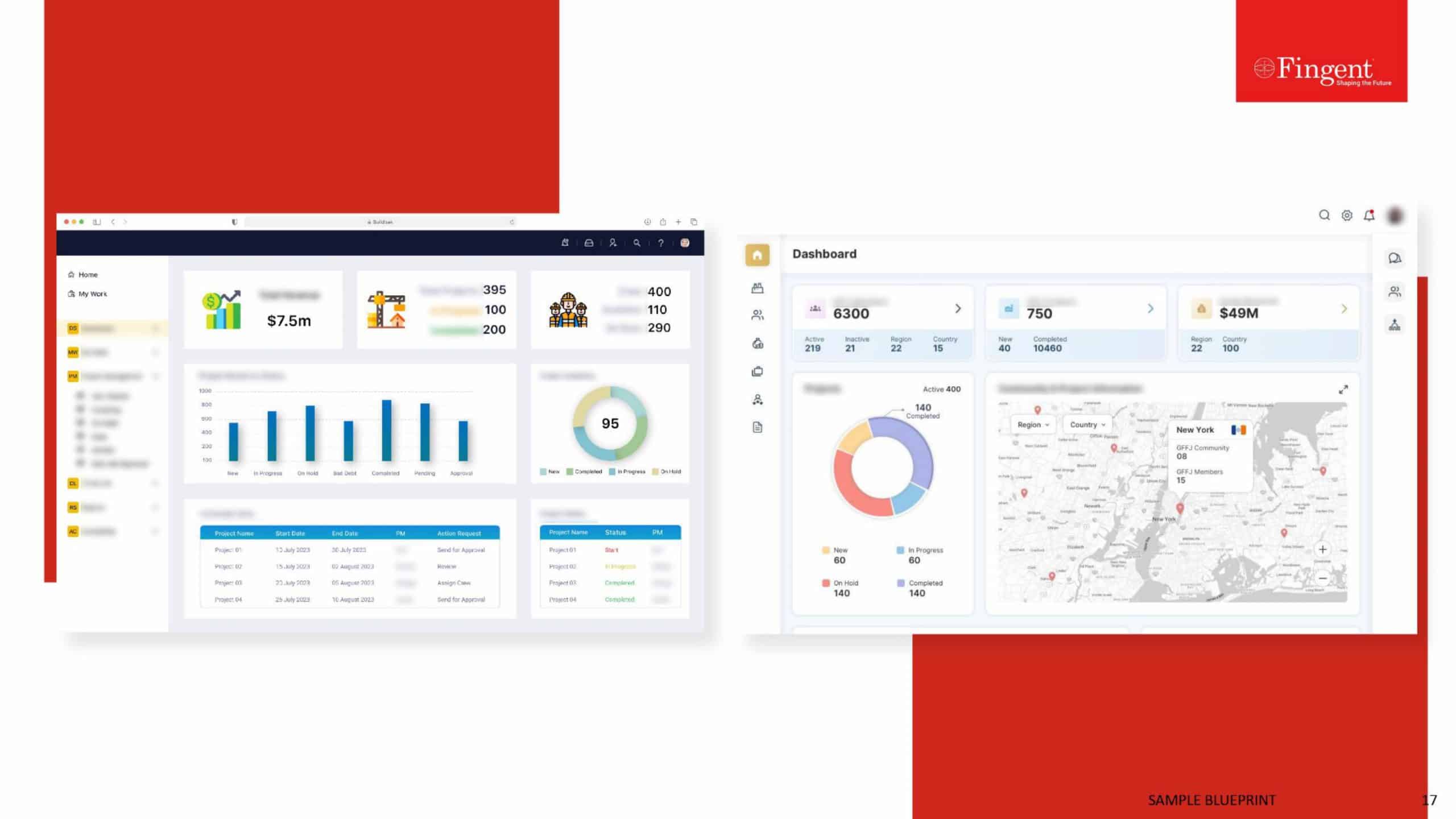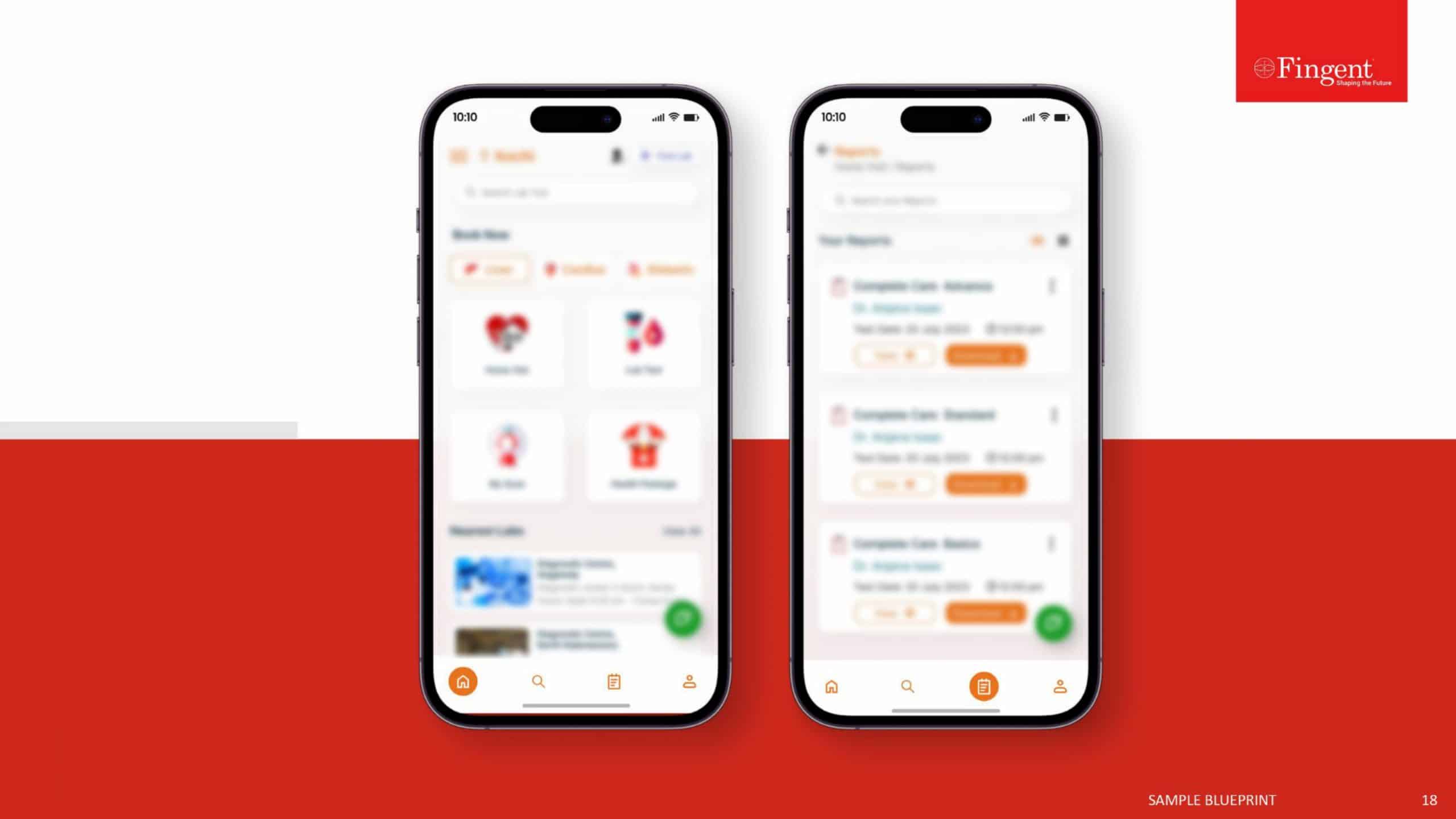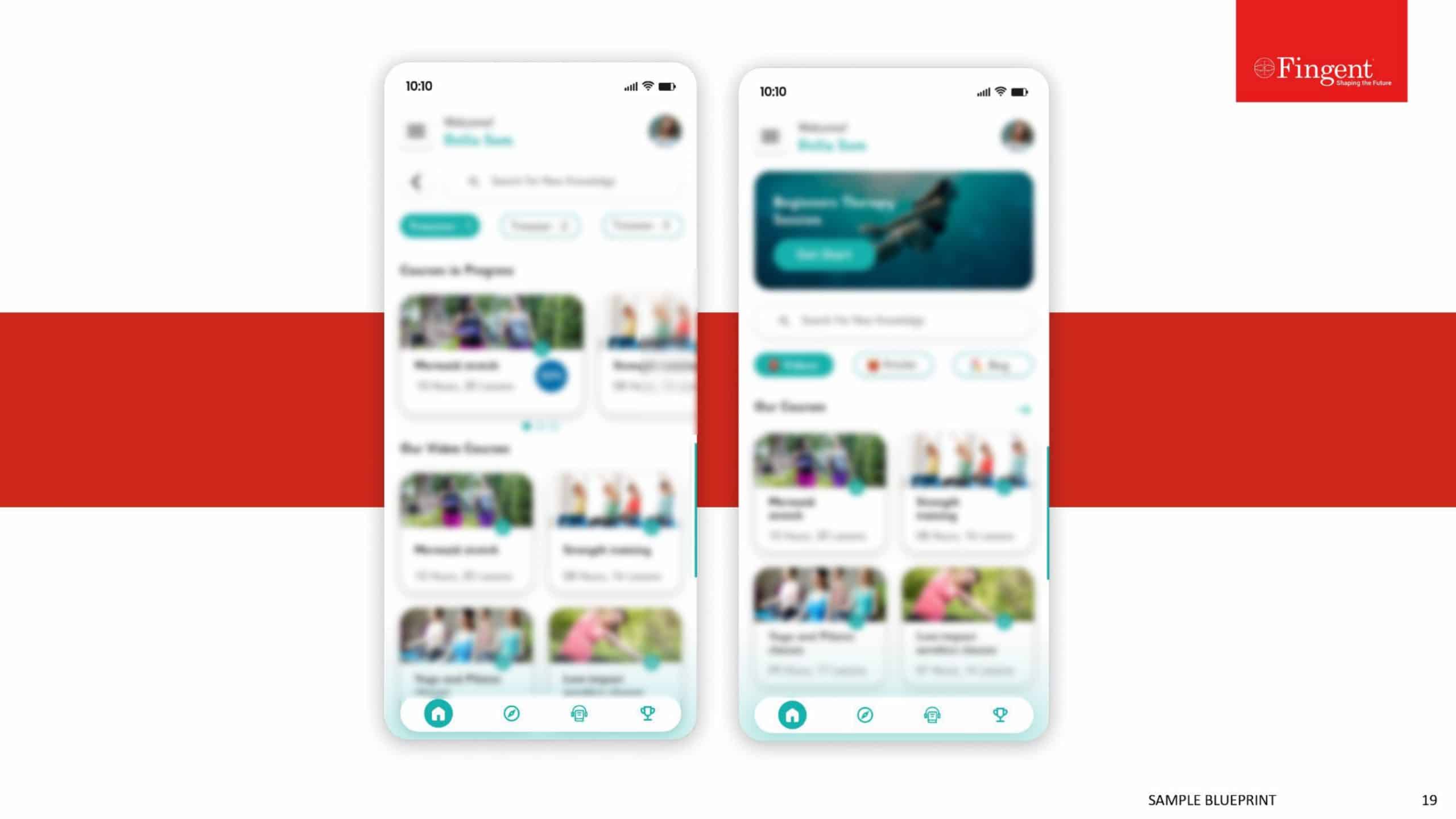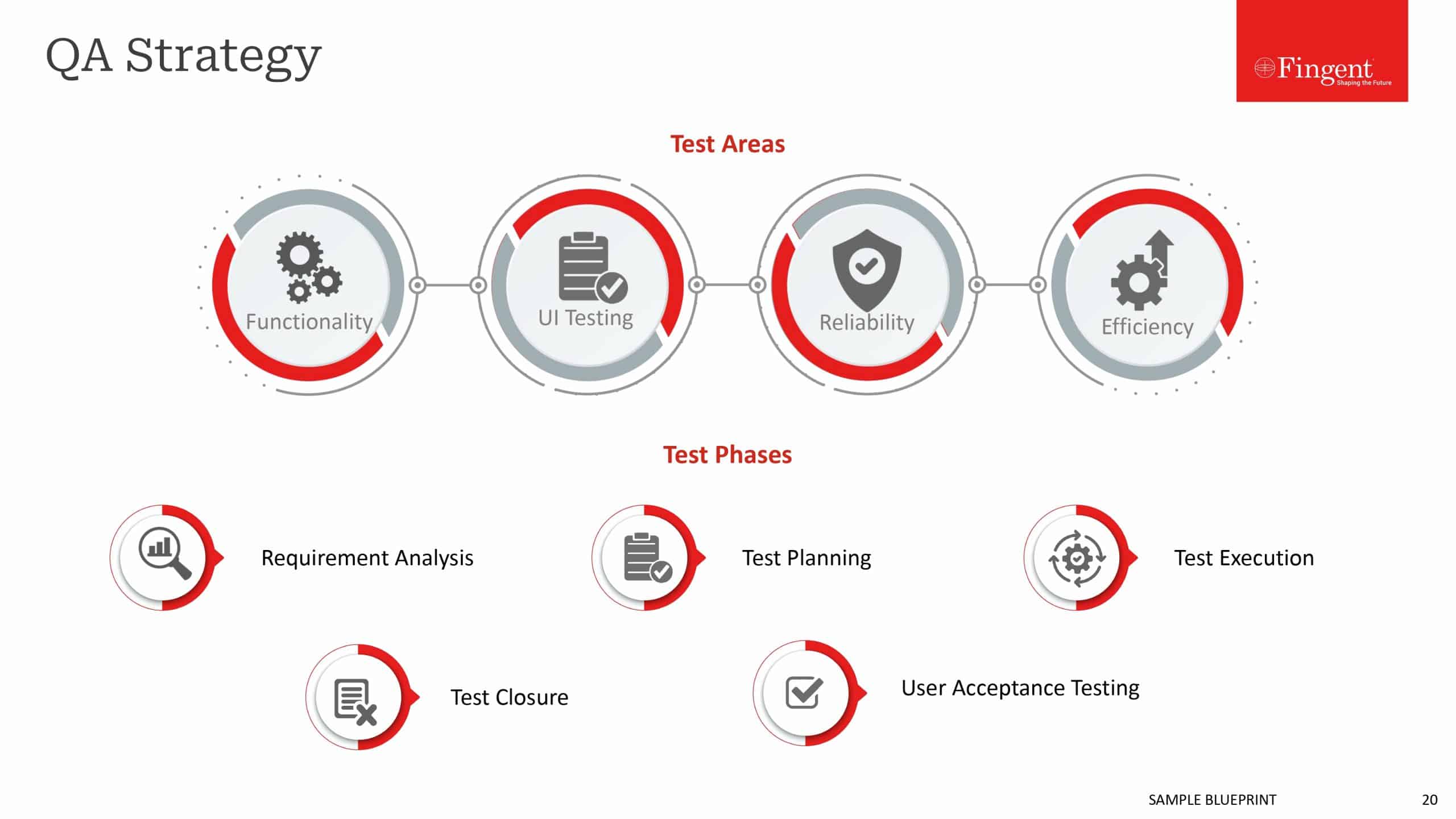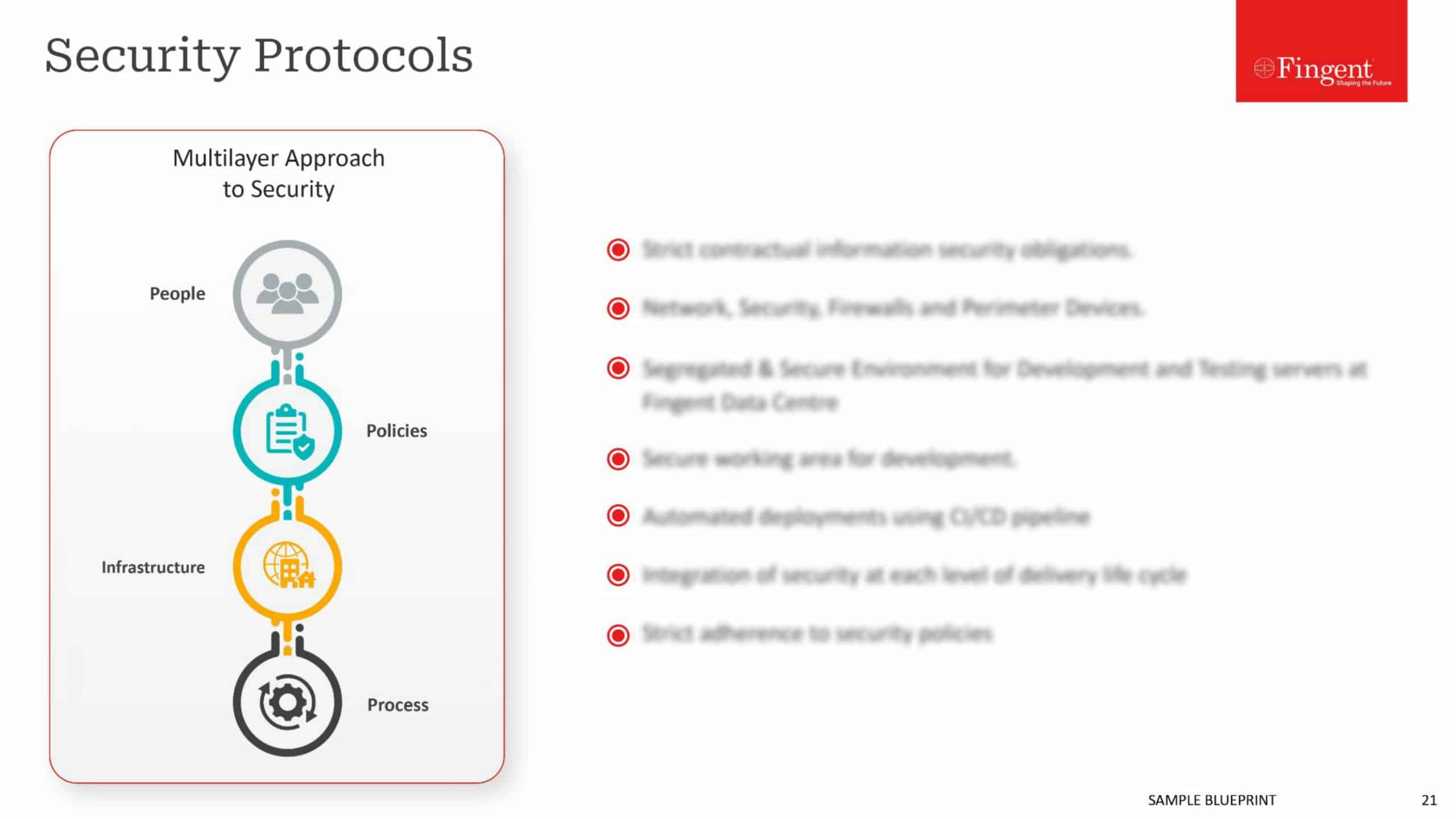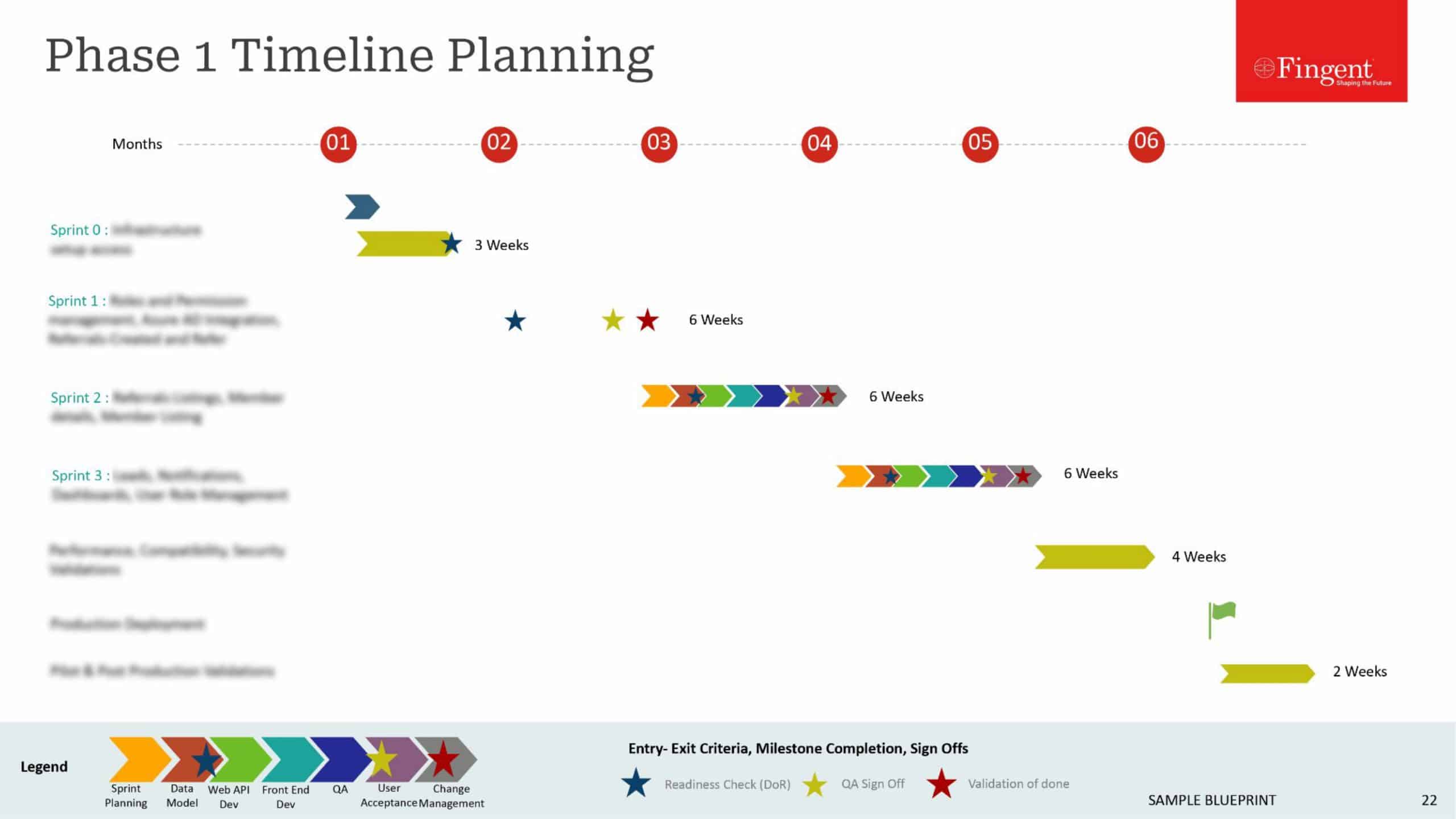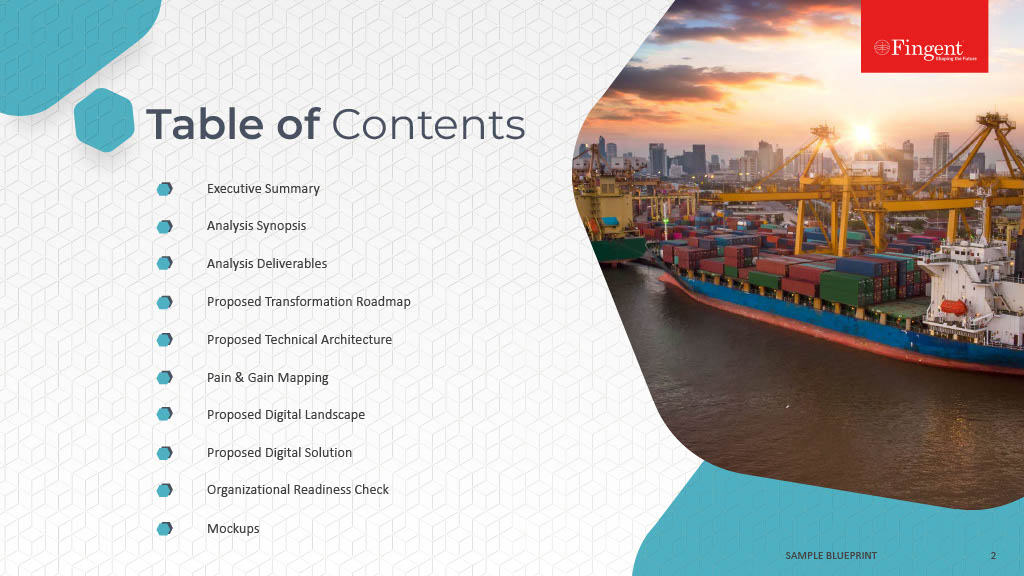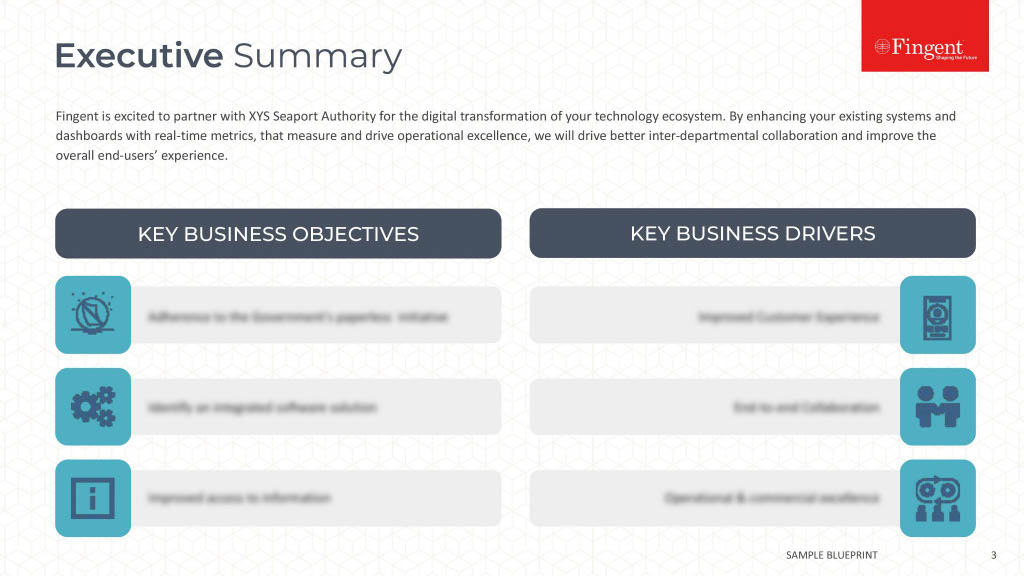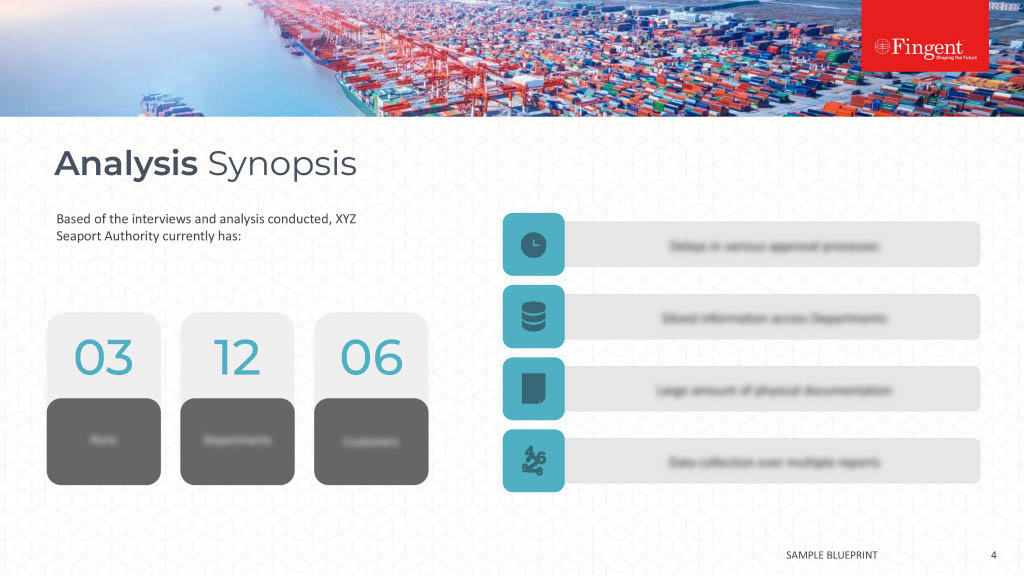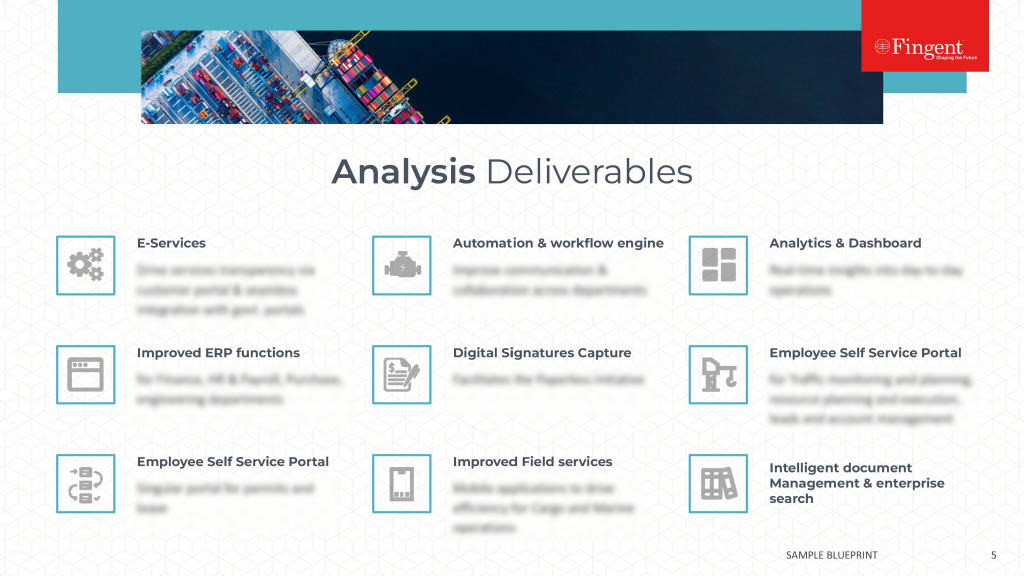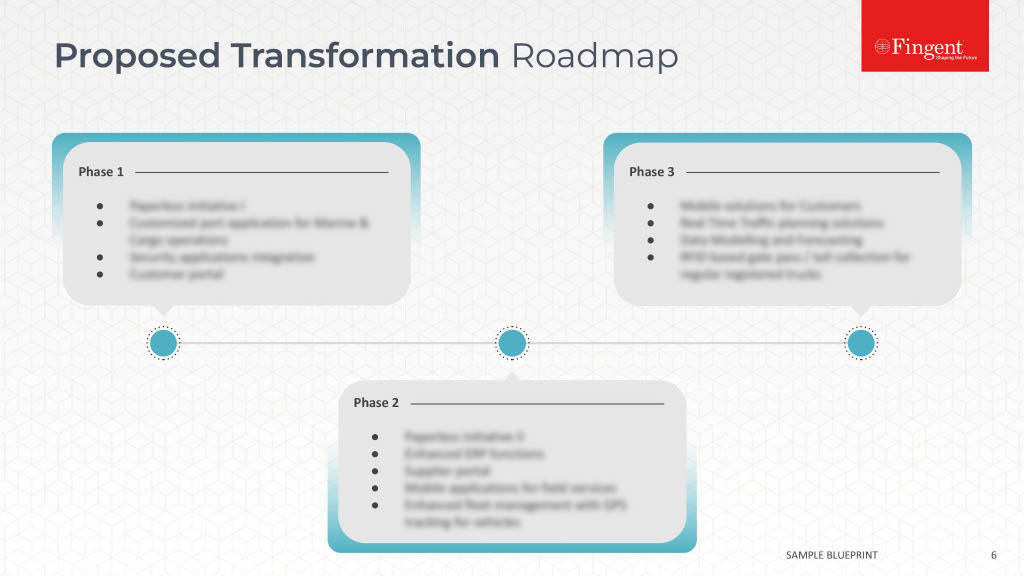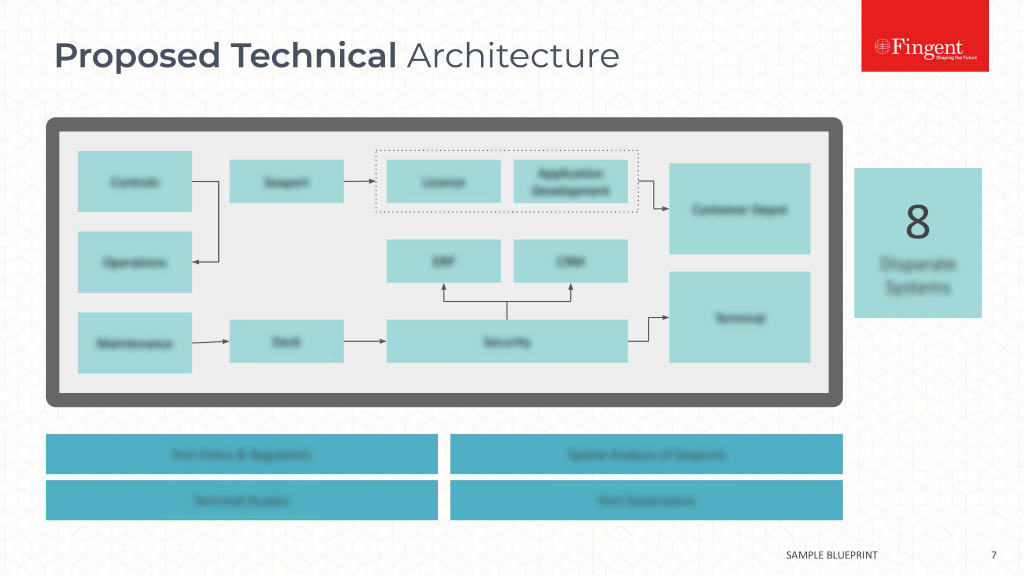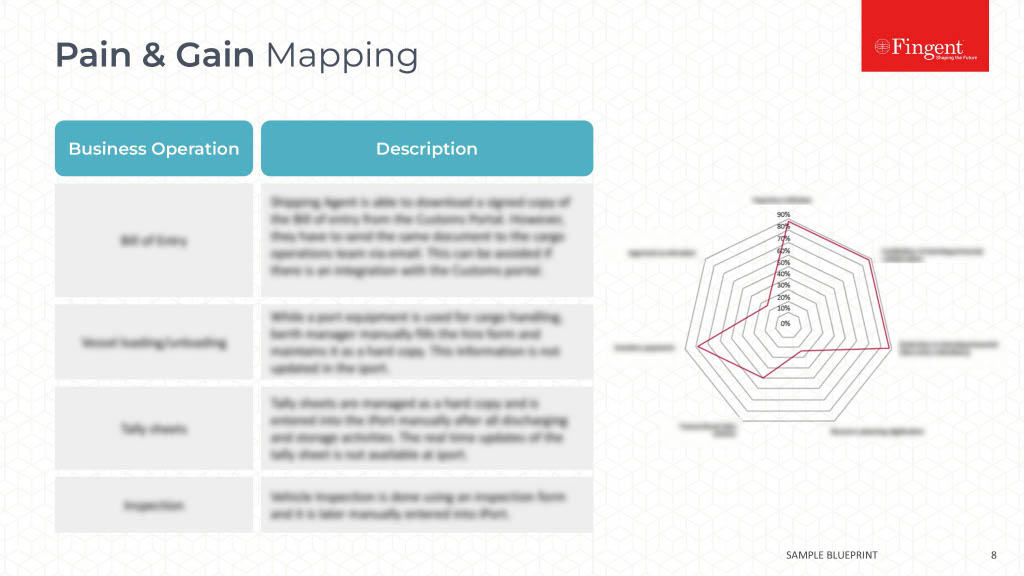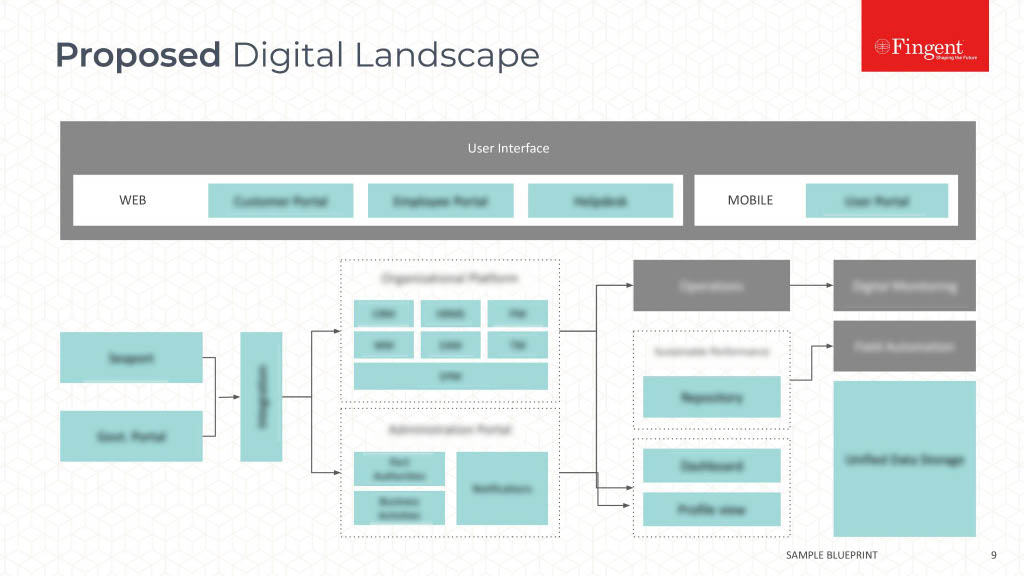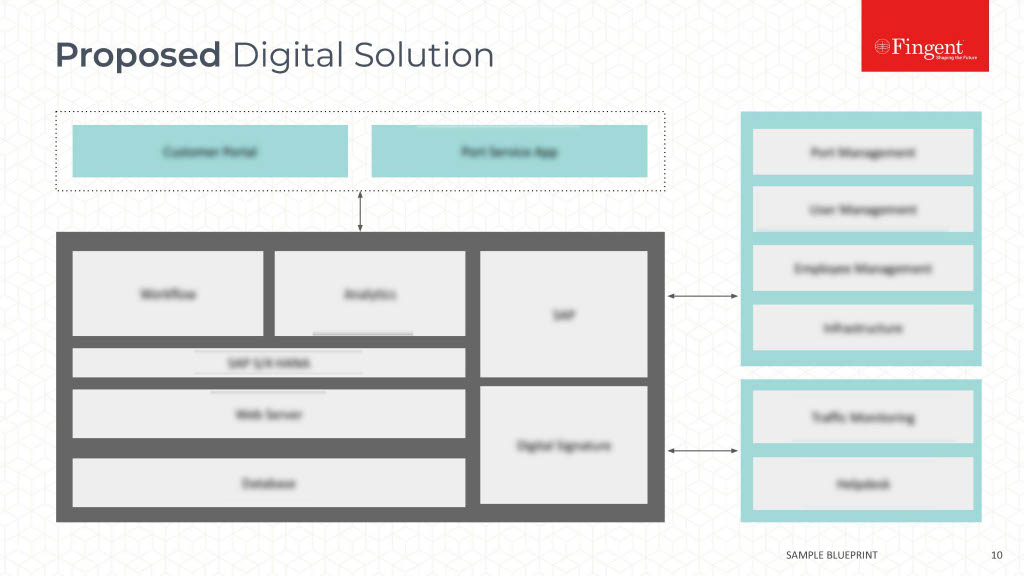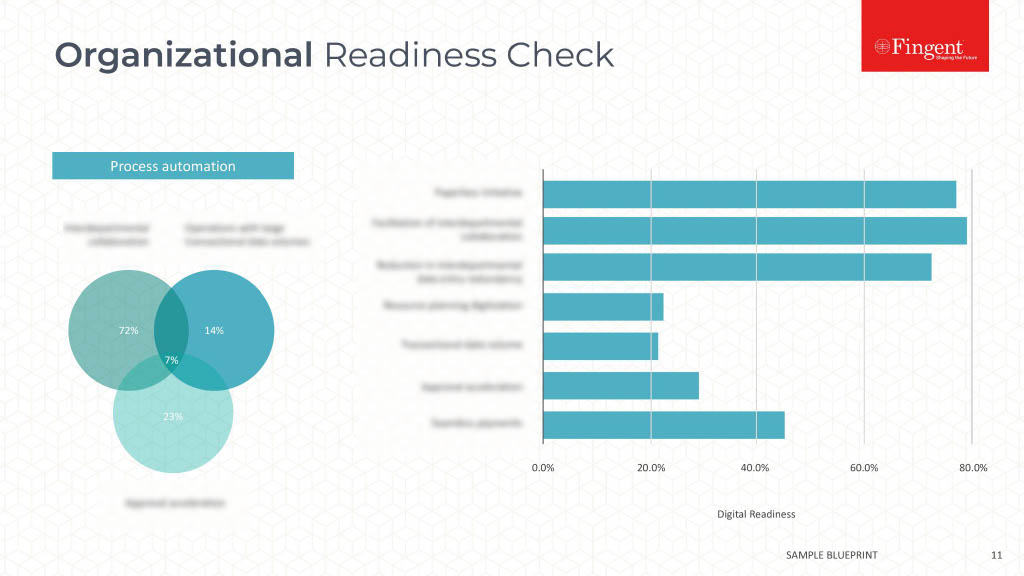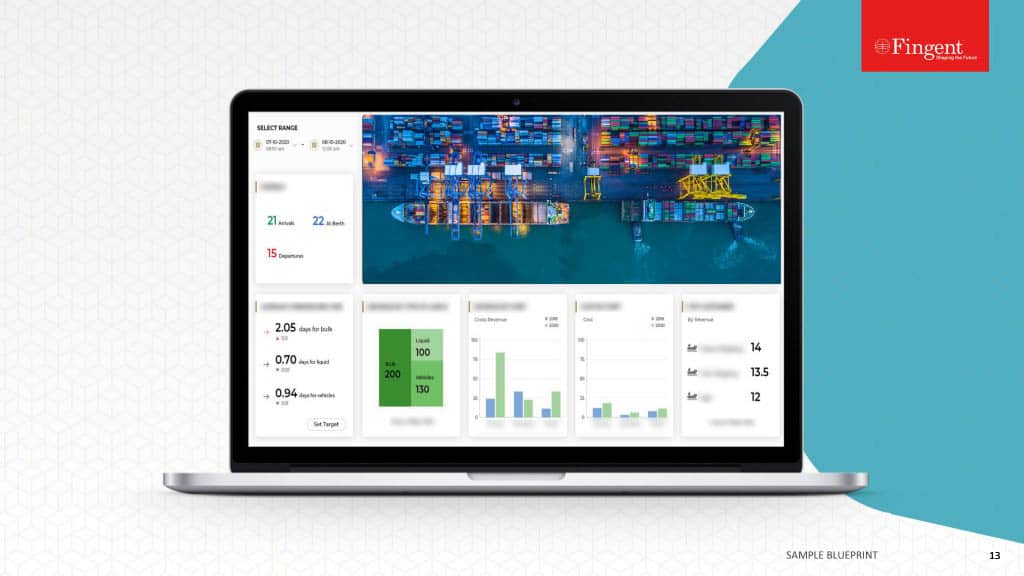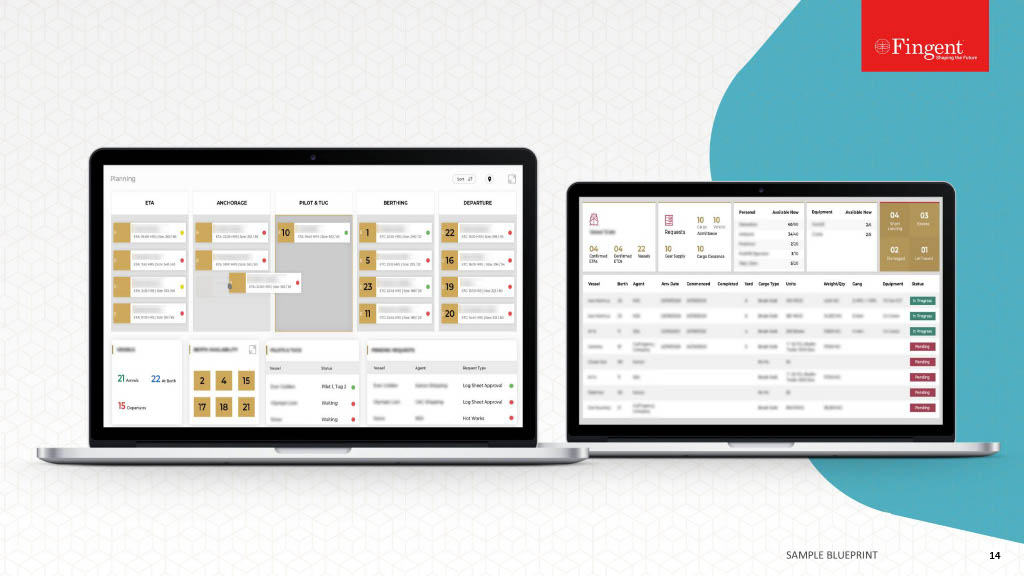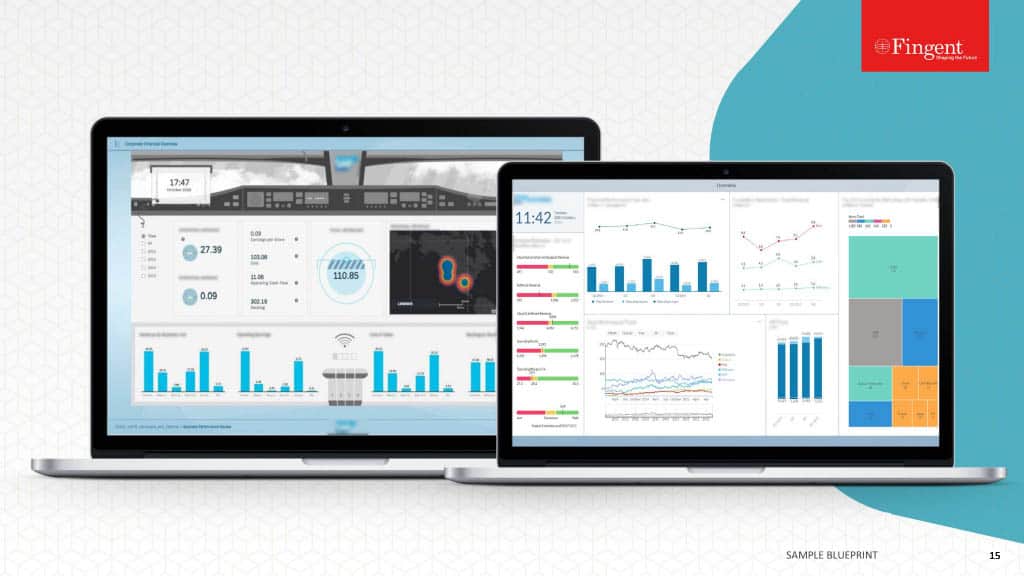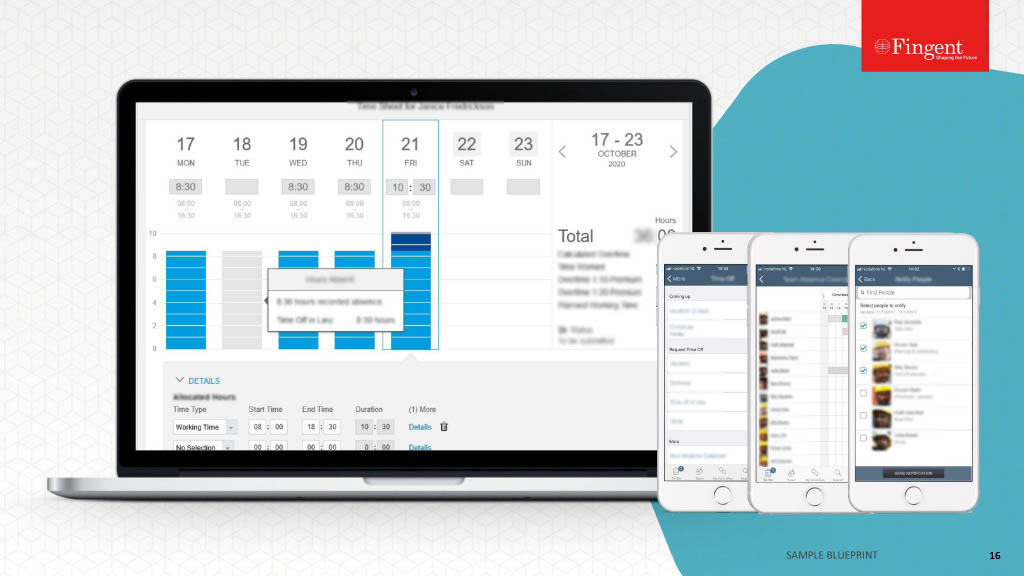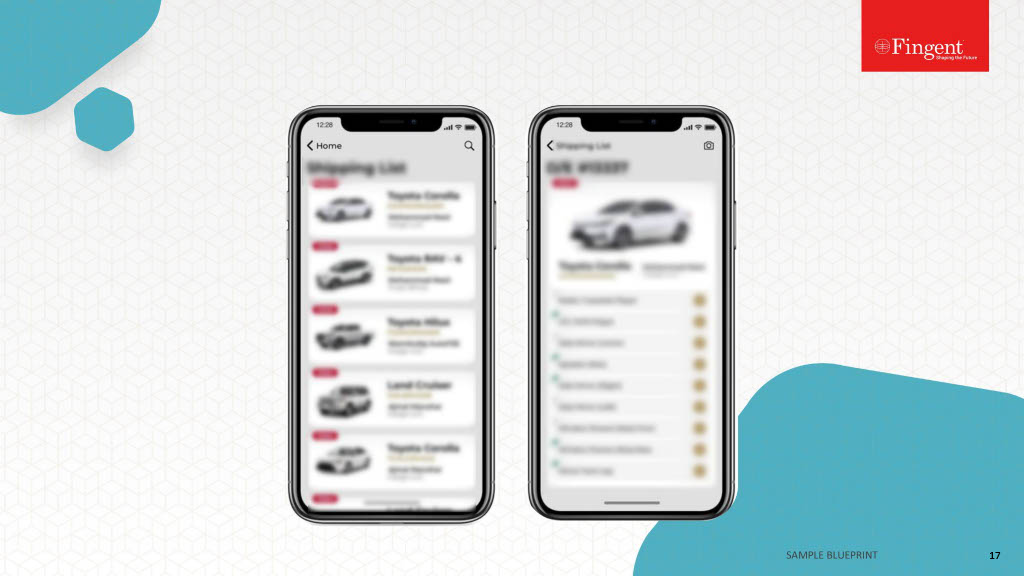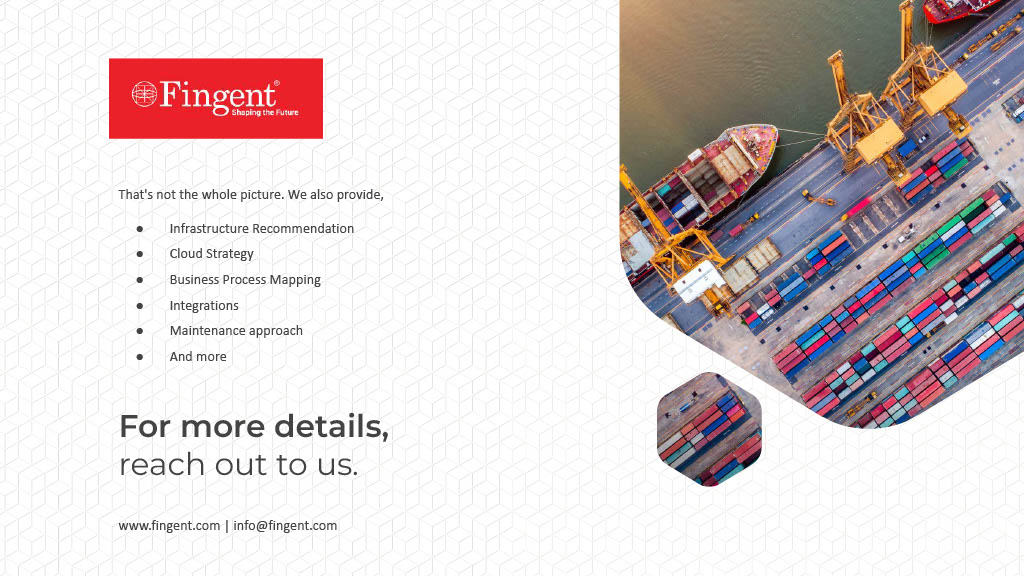Category: Business
To reiterate John F. Kennedy, “Change is the law of life, and those who look only to the past or present are certain to miss the future.”
The digital world revolves around evolution and change. It is constantly transforming from one stage to the next. Do you feel lost in this metamorphosis of digital transformation? Does the fervent adoption of advanced technology into business processes catch you off-guard and unprepared?
We understand and want to help you navigate and thrive in this new era. Stay with us and continue reading.
What Is Digital Transformation?
Digital transformation is the process of utilizing digital technology to develop or modify current corporate practices, culture, and consumer experiences to meet shifting business and market requirements. The perks include better company agility, improved efficiency, and, eventually, the creation of new value for shareholders, consumers, and employees.
According to Gartner, 87% of senior business leaders believe that digitalization should be a top priority for businesses, and 91% of organizations across the globe are currently involved in some sort of digital operation. To improve its client experience, a business might implement AI or cloud computing, for instance. Or it might change its supply chain to ensure machine learning is used more effectively. There are innumerable ways to digitalize your business and reap its many benefits.
Why Is Digital Transformation Important?
The pandemic changed the relevance of digital transformation almost overnight. From a way of enhancing customer care, it quickly became embedded into the core operational and innovative aspects of an organization. In this day and age, an organization’s sustainability may be in jeopardy if it fails to implement digital transformation. This is vital to satisfy the demands of the business landscape. As per Statista, digital transformation has been the leading priority for information technology (IT) initiatives for global companies since 2020.
Businesses are using digital solutions to help them customize their interactions, communications, and goods to meet the unique needs of their clients. For instance, a report by Gartner estimates that by the end of 2020, chatbots will power 85% of customer support. Here are some important reasons why businesses are adopting digital tech:
- Improvement Of Customer Experience – Customer experience is at the core of digital. In order to enhance the customer experience, 92% of business leaders are developing sophisticated digital transformation strategies.
- Additional Data-Based Insights – The tracking and analysis of metrics are made possible by going digital. Making efficient decisions and increasing ROI can both be accomplished by using data-driven insights to better understand customers and re-evaluate business strategies.
- Competitive Edge – By developing new goods and services, entering new markets, and enhancing customer comprehension and service, digital transformation enables organizations to achieve a competitive edge.
- Cost-Cutting – By automating procedures, reducing waste, and improving supply chain management, digital transformation lowers business expenses. A McKinsey study found that businesses that completely adopt Digital Transformation can cut costs by up to 50%.
Stages Of Digital Transformation
Digitization, digitalization, and digital transformation are the three major stages of the Digital Transformation process. A successful implementation requires businesses to move from one stage to the next seamlessly.
- Digitization – The transformation of manual (analog) information into digital format, enabling easy manipulation, storage, and transmission, is called digitization. It is the process of moving to a digital business. For instance, converting paper forms into electronic documents.
- Digitalization – Using digital technologies and digitalized data to enable or improve business processes is known as digitalization. For instance, using a marketing website, software, or mobile app to stay in touch with customers and employees is an example of how digitalization may modify an organization’s operating structure and provide new revenue and value-producing opportunities.
- Digital Transformation – The use of new and developing technologies to encourage sustainable innovation and creative expansion while making fundamental changes in an array of business-related areas. It enhances all aspects of the organization, including how employees engage with clients and how operations are carried out. For example, it collects insights from previous customer data, behavioral patterns, and purchase history to customize products and services offered. That is one of its many benefits.
How To Discover Where Your Business Stands
Legacy challenges are frequently overcome as part of digital transformation, but how effective is it? Measuring the progress of any effort with well-defined KPIs and metrics is the only way to know how far you have come.
Tips to measure the progress of digital transformation:
- Feedback from your employees and co-workers
- Track fluctuations in customer feedback
- Analyze the data across the different initiatives that you have implemented
Some additional metrics to track include:
- The degree of digital adoption
- Customer satisfaction rankings
Receiving feedback and measuring progress this way can help you locate where your business stands in its Digital Transformation process and improve your strategies to drive better results.
The Future Of Businesses In Digital Transformation
From using cutting-edge technologies to making strategic decisions, Digital Transformation is influencing businesses. It alters how firms operate, streamlining operations, boosting efficiency, and establishing a cultural shift. A prediction by International Data Corporation states that 75% of corporate executives will use digital platforms and ecosystem capabilities by 2025 to increase their platforms’ agility, efficiency, and sustainability.
Here are some future trends in Digital Transformation:
1. Low-Code, No-Code
Low-code, no-code is a method of software development that calls for either very little (low-code) or no (no-code) coding at all. As per studies, low-code and no-code platforms will be used for more than 65% of software development by 2024. The market will be valued at $13.8 billion in that year!
2. Cloud Migration
Cloud migration is the act of moving data and applications from one location, typically a company’s on-premises servers, to a public cloud provider’s servers. The four benefits of cloud migration are efficiency, accessibility, scalability, and security.
3. Artificial Intelligence And Machine Learning
AI uses machine learning for data analysis and forecasting to guide efficient digital organizational strategies, personalize interactions, optimize workflows, and offer consistently dependable services 24/7.
Strategizing An Effective Digital Transformation Journey
While undertaking such a big change, it is important to have a foolproof strategy to rely on. Following are a few aspects that you can consider during your digital transformation process:
- Transformation Of Business Strategies – Technology becomes pivotal to business strategy in the aftermath of digital transformation. Operating expenses and inefficiency can be decreased with this strategy.
- Realigning Business Operations – For agility and experimentation, it is essential to transform corporate procedures and adopt new working methods.
- Adopting Novel Methods Of Agility And Experimentation – Modern engineering capabilities must be combined with new working methods as customer expectations and the rate of change increase. Successful digital transformation requires a fundamentally different strategy—one that values the accessibility of technology and the adaptability of people.
- Flexible Technology Is At The Heart Of Long-Lasting Change – Staying fluid and adaptable will enable you to more readily create ecosystem connections that foster speed and scale while also accelerating innovation within your organization.
Watch more: 7 Deadly Mistakes Non-Tech Businesses Make On Tech Projects!
How Can Fingent Help?
Fingent is one of the leading solution providers in the world. We have been around since 2004 and have successfully transformed many businesses from traditional modules into digitalized success stories.
Fingent has expertise in all the technologies that drive a successful digital transformation journey. Specialists in Cloud computing, Artificial Intelligence and Machine Learning, Virtual and Augmented Reality, and more come together to create a holistic digital solution for your business.
Talk with our Digital Consultants, who will analyze your unique requirements and work out a future for your business that is equipped to succeed in the digital age.
Stay up to date on what's new

Featured Blogs
Stay up to date on
what's new



Talk To Our Experts
In the digital age, cloud investment is your business’s propulsion, offering flexibility, scalability, and a competitive edge. However, many companies don’t fully reap the cloud’s benefits. The cloud’s potential remains untapped.
So, why is cloud investment crucial, and how does it contribute to a company’s success? Let’s explore! We’ll help you master cloud investment.
The Cloud: More Than a Buzzword!
In a rapidly evolving tech landscape, the cloud isn’t just jargon; it’s your business compass. It’s a dynamic virtual ecosystem transforming operations. But here’s the key point: merely having cloud infrastructure in place is just the starting point.
To truly unlock its potential, you need to understand how to maximize your cloud investment. Whether you’re a startup seeking growth or an enterprise aiming for efficiency, the cloud is your golden ticket to success.
Studies predict the global cloud computing market will surpass $2,321.1 billion by 2032, driven by a consistent 16% CAGR from 2023 to 2032. Companies of all sizes are increasingly recognizing the advantages of cloud technology, and you should, too!
So, let’s dive right in!
Unlocking the Cloud’s Potential
Why don’t some businesses make the most of the cloud? Their approach often holds the key.
Imagine having a sports car with a powerful engine but only using it for leisurely drives. That’s what it means to have cloud technology but not know how to utilize it fully.
Common pitfalls include choosing the wrong cloud model, neglecting data security, failing to optimize costs, and missing out on scalability. These elements can turn your cloud investment into a business powerhouse when managed effectively.
In the following sections, we’ll delve deeper into each area, providing you with a map to unlock your business cloud investment’s full potential.
Know Where You Stand!
Did you know? A staggering 92% of enterprises now utilize multiple cloud services.
Your business’s cloud potential is significant, and your cloud journey is pivotal for your business’s success and growth in today’s digital era. With the right approach, you can unleash the full potential of the cloud, boost efficiency, and drive innovation. Here is how you can know where you stand in your cloud potential
Step 1: Assess Your Current Cloud Environment
The first step in grasping your cloud potential is evaluating your existing cloud setup. Regardless of whether you’ve already transitioned to the cloud or are contemplating it, it’s crucial to gain a clear understanding of your current position.
- Cost Efficiency Metrics: Review your cloud spending. On average, organizations wasted 35% of their cloud budget in 2021.
- Performance Metrics: Measure your cloud infrastructure performance. Downtime carries a significant financial burden. Companies experiencing frequent outages and brownouts incur costs 16 times greater than those with fewer instances of downtime.
- Security and Compliance: Assess your security measures. The average cost of a data breach is $4.45 million.
Step 2: Establish Clear Objectives
Once you’ve gained a comprehensive view of your current cloud environment, it’s time to set precise goals for your cloud strategy. In a 2021 survey conducted by Gartner, a notable 80% of organizations indicated they had either transitioned to a cloud-first strategy, were planning to do so, or were considering it. Your objectives could include:
- Cost Optimization: Trim cloud wastage and streamline spending to enhance cost efficiency.
- Scalability: Ensure that your cloud environment can smoothly adapt to shifts in workload or demand.
- Innovation: Foster innovation by tapping into the cloud’s capabilities for data analytics, AI, and machine learning.
Step 3: Harness Data and Analytics
Data-driven decisions are the linchpin of maximizing your cloud potential. Leverage analytics tools to gain insights into your cloud usage and performance. This approach can assist you in spotting trends and identifying areas that require improvement.
Large enterprises are now prioritizing cloud adoption, aiming to move 60% of their operations to the cloud by 2025, underscoring the critical role of data-driven decision-making in business.
Step 4: Seek Expert Guidance
Do not hesitate to seek guidance from cloud experts on your cloud journey. Organizations achieve greater success in realizing their cloud goals when they have access to cloud experts. Collaborate with cloud service providers, managed service providers, or cloud consultants to navigate the cloud landscape effectively.
Step 5: Continuously Monitor and Adapt
Cloud technology is continually evolving. Routinely monitor your cloud environment and adapt to changes. This iterative process is pivotal in making the most of your cloud investment.
Now let’s understand why is embracing the cloud vital for future-readiness.
Read more: Cloud Application Development: Empowering Your Business in the Digital Era!
Why Embrace the Cloud for Future Readiness
In our dynamic business world, cloud adoption is more than a choice; it’s a strategic necessity. Let’s explore some reasons:
- Scalability and Flexibility: As your business grows, you can seamlessly adjust your cloud resources to meet increased demand. This flexibility ensures that you’re prepared to adapt to changing market conditions and accommodate rapid expansion.
- Cost Efficiency: The cloud allows you to pay only for the resources you use. This eliminates the need for heavy upfront investments in hardware and reduces operational costs. A well-managed cloud strategy can result in significant cost savings, which is vital for long-term sustainability.
- Innovation Acceleration: Cloud platforms offer a plethora of tools and services for data analytics, artificial intelligence, machine learning, and more. Leveraging these capabilities can spark innovation, drive competitiveness, and enable your business to stay at the forefront of your industry.
- Global Reach: Cloud services allow businesses to reach customers and partners around the world. This global accessibility is crucial for international expansion and remaining competitive in a global marketplace.
- Security and Compliance: By migrating to the cloud, you can benefit from their expertise and state-of-the-art security protocols, enhancing your ability to protect sensitive data and adhere to industry regulations.
- Competitive Edge: Access to cutting-edge technology and the ability to swiftly respond to market changes can be differentiators in a crowded marketplace.
- Sustainability: Cloud providers are increasingly focused on sustainable practices. By migrating to the cloud, your business can reduce its carbon footprint through more energy-efficient data centers and shared resources.
How Can Fingent Help in Your Cloud Journey?
At Fingent, we understand that each business’s cloud journey is unique. We are committed to helping you unlock the full potential of your cloud investment. With a deep understanding of cloud technologies and a proven track record in cloud consulting, we offer:
Tailored Solutions: We’ll work closely with you to understand your business needs and provide customized solutions that align with your objectives.
Expert Guidance: Our team of cloud experts is always ready to assist you at every stage of your cloud journey, ensuring a smooth transition and ongoing success.
Innovation and Efficiency: We leverage the latest cloud technologies to drive innovation, enhance efficiency, and optimize costs, helping your business thrive in today’s competitive landscape.
So, take the plunge, make the most of your business cloud investment, and watch your business soar to new heights. The cloud is your oyster; it’s time to unlock its treasures! Give us a call today.
Stay up to date on what's new

Featured Blogs
Stay up to date on
what's new



Talk To Our Experts
Are you sick and tired of performing the same monotonous task every day? Well, if your answer is yes, then Generative AI can benefit you.
Technology is evolving at a rapid rate, with new inventions and software being built on an almost daily basis. A significant increase in computer power, data storage, and algorithms has made it possible to create more proficient AI systems. With these advances in technology, AI is now increasingly available and useful in a variety of business sectors. Generative AI is one of the branches of AI that enables companies to develop, test, and improve solutions to challenging issues.
Let’s see how this amazing technology can boost your business processes.
What is Generative Artificial Intelligence?
As the name suggests, this is a form of Artificial Intelligence that has the ability to generate, create, or fabricate new content, including text, imagery, audio, and synthetic data. Artificial intelligence (AI) models produce new data by learning the patterns and structures of their training data.
The ease with which modern user interfaces can produce professional-level text, drawings, and films in just a few seconds has recently generated a lot of hype around Generative AI. Generative AI uses sophisticated neural networks to acquire information from huge datasets and generate outputs on its own. This is in contrast to typical AI systems that rely on set guidelines or explicit data patterns.
Custom Al software can boost your business to do more. Connect with our experts today to strategize your Al investments.
Types And Uses Of Generative AI
There are various Generative AI model types, and each has a distinct approach to creating content. The most prominent versions of generative AI models include:
1. Generative Adversarial Networks (GANs): This model includes two sub-models – the generator and the discriminator. The generator (trained to generate new examples) aims to create extremely realistic content to deceive the discriminator, which is thus trained to improve its ability to distinguish between real and fabricated data.
2. Autoregressive Models: This model is essentially known for its ability to create coherent and contextual content with appropriate text. A very common example of this model is GPT (Generative Pre-trained Transformers).
3. Recurrent Neural Networks (RNNs): RNNs are a form of neural network that analyzes sequential data, including time-series data or natural language sentences. By foreseeing the following elements in the sequence given prior elements, they can be employed for generative tasks.
Generative AI has found its use in almost all fields of life and business. It is essentially used in generating content, data augmentation, fabrication of synthetic data, graphic design, and code writing.
Don’t Stay Behind! Unlock Business Growth, Efficiency & Innovation With AI.
How Is Generative AI Impacting Modern Business?
47% of businesses utilizing AI, say sales and customer service, are where Generative AI is most frequently used.
Generative AI streamlines workflows by automating repeated processes that were previously time- and resource-consuming. Businesses can reach unmatched levels of productivity by utilizing Generative AI’s sophisticated language models, freeing up personnel to concentrate on jobs with a favorable return on investment that promotes growth and innovation.
AI helps businesses identify bottlenecks and inefficiencies to streamline operations. Additionally, the quality control procedures are automated by AI systems, which ensures product uniformity and lowers manufacturing flaws.
Compared to other apps, Chat GPT attracted 100 million users more quickly.
Benefits Of Using Generative AI
There are innumerable benefits to installing a Generative AI model into your business plan. Some of the major benefits experienced are:
- Amplification of creativity: Generative AI can foster more originality and innovation.
- Saving time and money: By automating and improving everyday mundane tasks and processes, generative AI can reduce both time and costs.
- Hyper-personalization: Using generative AI, personalization and customization of data can be boosted.
- Enhanced productivity and efficiency: When the need for repetition of mind-numbing and tedious tasks is removed, Generative AI can increase output quality and operational effectiveness.
- Data synthesis: Generative AI is capable of yielding original data quickly and effectively, supporting operations including data organization, processing, augmentation, and synthesis.
- Realistic simulations: Generative AI is capable of decoding complex algorithms, converting satellite photos to maps, producing images for medical applications in real time, and producing spontaneous marketing data.
- Adaptive learning: Generative AI’s data-driven insights and forecasting model can help in making sound decisions.
- Superior knowledge organization and discovery: Customer assistance, e-commerce interactions, and several other fields where effective communication is essential can be revolutionized by Generative AI.
How To Utilize The Best of Generative AI For Your Business?
If you want the best of generative AI, the first thing you should consider is your business requirements. Analyze what your weaknesses are, and then correlate them with the features this technology can provide. Once you are clear on where and how you want to use your artificially intelligent partner, you can explore the many possibilities it presents. Here are some ways in which you can use Generative AI:
1. Data Analytics
Data analytics solutions powered by generative AI make data analysis more intelligent, quick, scalable, and safe. For more safe and compliant data analysis and QA testing processes, you can utilize generative AI to produce synthetic data, depending on the model type and size you choose.
Examples: Dermio, Narrative BI, and Power BI Co-pilot
2. Customer service and user experience
There are now several Generative AI tools available to guide your current customer care representatives and, in some cases, replace them with chatbots, speech generation technology, and AI-powered search engines that are created with client inquiries and natural language requirements in mind.
Examples: Gridspace, IBM Watson Assistant, and Forethought SupportGPT.
3. Assistant Coding and Product Design
For the production of digital products, Generative AI can be used to support coding and quality control tests. Bug fixes, test code generation, and software documentation are all possible with models like ChatGPT.
Examples: ChatGPT, Google Bard, Code Snippets, and Tabnine
Read more: Custom AI Copilots: Unleashing New Opportunities
4. Document summarization
A lengthy contract, legal document, conversation transcript, or other long-form content type can be quickly and easily distilled down to its most crucial details using this method. Some generative AI systems are used for independent content summaries, while others are integrated into tools used for project management and routine business processes.
Examples: Cohere Summarize, PatentPal, and AI21 Studio.
Read more: Applied AI For Document Processing
5. Cyber Security Management
Cyber security applications of generative AI include improved threat detection and hunting, contextualized security environment suggestions, and attack simulations. While many of these new generative AI security technologies are either new features or add-on items for current cyber security systems, others are independent businesses.
Examples: Google Cloud Security AI Workbench, Microsoft Security Co-pilot, and Airgap Networks ThreatGPT.
Watch now: How Artificial Intelligence impacts customer experience!
How Can Fingent Help?
Fingent has been a pioneer in the Artificial Intelligence game and has built many custom AI-powered apps for clients worldwide. Our experts work on AI platforms such as Natural Language Processing, Computer Vision, Speech Recognition, and more. Having acquired expertise in robotic and business process automation, experts at Fingent can help you achieve cost and time efficiencies and yield a greater margin of profit for your business.
Fingent top custom software development company, is equipped to help businesses of all sizes, including start-ups, as well as well-established organizations. We will be with you through all your processes, from suggesting products to providing basic customer service to running software tests. Allow us to empower your business with the power of Generative AI. Give us a call today.
Stay up to date on what's new

Featured Blogs
Stay up to date on
what's new



Talk To Our Experts
Our digital era is a whirlwind of change, with technology driving transformation at breakneck speed. It’s not just about adopting new gadgets; it’s about recognizing technology’s influence on consumer interactions. Retailers are at a crossroads with fresh opportunities and challenges. However, there’s a bright side – smart retail technologies can enhance the consumer experience, adapting to modern shoppers’ evolving needs and expectations.
In this article, we’ll explore how technology is transforming the retail sector and how businesses can use these innovations to meet the ever-changing demands of modern consumers. Ready to elevate your retail game? Let’s dive in!
Revamping Retail: How Smart Technologies Elevate the Shopping Experience
To remain competitive, retailers are adopting smart retail displays. These technologies are rapidly growing, with a market value of USD 30.25 billion in 2022 and a projected CAGR of 29.1% from 2023 to 2030. The convergence of innovation and retail has given birth to a shopping experience like never before. The retail industry is undergoing a transformation that promises to delight and engage customers. Let us understand how they are making retail smarter and more efficient.
1. Augmented Shopping
Gartner’s 2020 prediction of 100 million AR users was spot-on, and during the same year, the conversion rate for AR users surged by an impressive 90%.
Augmented reality (AR) is no longer limited to entertainment. It’s transforming the way customers interact with your products. By overlaying digital information onto the physical world, AR allows customers to visualize products in their real-life settings. Imagine someone shopping for furniture, using their smartphone to see how that new couch would fit in their living room. It’s a powerful tool for enhancing decision-making and customer engagement.
Did you know? As per research conducted by Deloitte, utilizing virtual try-ons and Augmented Reality (AR) in shopping experiences results in a remarkable 94% increase in conversion rates.
2. Virtual Trial Rooms
The VR retail market is expected to see substantial growth, increasing from USD 3.18 billion in 2023 to USD 18.99 billion by 2032, with a remarkable compound annual growth rate (CAGR) of 25.00% over the forecast period.
One of the most thrilling advancements in VR and AR in retail is the emergence of virtual fitting rooms. For clothing retailers, virtual trial rooms are a godsend. These digital fitting rooms allow customers to try on clothing virtually, eliminating the need for physical changing rooms. Shoppers can see how garments look and fit without the hassle of undressing. This technology saves time and enhances the overall shopping experience.
3. 3D Web Configurations
Instead of static product images, customers can interact with 3D representations of your products. This technology bridges the gap between online and in-store experiences, making online shopping feel more tactile and immersive. A recent study revealed that 93% of Gen Z have shown keen interest in using AR and 3D configurators for their shopping experiences.
In today’s digital age, attracting customers to your physical store can be challenging. Here, 3D experiences play a crucial role. These immersive technologies enable customers to explore your products thoroughly without visiting the store, helping them make informed decisions. This not only boosts conversion rates but also enhances in-store interactions with your staff, who can better understand customer needs.
4. Staff and Cashier-Free Stores
Staff and cashier-free stores are becoming increasingly popular, thanks to technologies like RFID, computer vision, and automation. Retailers are now investing largely in automated checkout processes. This innovation not only eliminates the need for traditional checkout lines but also enhances security and reduces theft.
Shoppers can grab what they need and simply walk out of the store, with their accounts being charged automatically. This convenience and time-saving aspect of cashier-free stores greatly enhances the overall shopping experience.
5. Data Science-Based Personalization
Data science and artificial intelligence are at the heart of personalization in the retail industry. Retailers collect and analyze vast amounts of customer data to tailor shopping experiences. Machine learning algorithms analyze a customer’s browsing and purchasing history to provide personalized product recommendations, exclusive discounts, and content. This increases sales and makes customers feel valued and understood.
6. Machine Learning for Demand Forecasting
Machine learning is transforming the way retailers manage their inventory and predict customer demand. Traditional methods of demand forecasting often led to overstocking or understocking issues. Machine learning algorithms, however, can analyze real-time data and make more accurate predictions based on various factors like seasonality, customer behavior, and market trends.
This technology ensures that stores have the right products in the right quantities at the right time, reducing waste and ensuring that customers can find what they want when they visit the store. Accurate demand forecasting greatly enhances the shopping experience and minimizes disappointment.
7. Frictionless POS Systems
Frictionless Point of Sale (POS) systems streamline the checkout process. Contactless payments, mobile wallets, and self-checkout kiosks make payments faster and more convenient for customers. With the ability to complete transactions quickly and without hassle, shoppers can spend less time waiting in line and more time enjoying their shopping experience.
Frictionless POS systems also provide a more secure and hygienic way to make payments, which has become increasingly important in the wake of the COVID-19 pandemic. In a survey of U.S. consumers, tap-to-pay mobile apps emerged as the top retail tech, with 66% giving it a positive rating for improving their shopping experience.
Watch now: How smart malls of the future would look like!
Transforming Retail Experiences: Fingent’s Expertise in Technology Solutions
At Fingent, we take pride in our role as a technology consulting and solutions provider, helping retailers navigate the modern landscape to discover unique opportunities and implement them swiftly with cutting-edge technology.
We believe in staying at the forefront of technological innovation, using data-driven insights to empower you to optimize operations, elevate customer experiences, and respond agilely to market changes. We employ agile development methodologies and support you through change management, ensuring that technology adoption is not just efficient but also seamless. We understand the importance of scalability, compliance, and security and work diligently to safeguard your interests.
By partnering with Fingent, retailers can confidently stay competitive, foster growth, and ensure long-term viability through innovative technology adoption. We are here to help you uncover the endless possibilities in the dynamic world of retail. Connect with our experts today!
Stay up to date on what's new

Featured Blogs
Stay up to date on
what's new



Talk To Our Experts
Many of us interact with Artificial Intelligence (AI) on a daily basis without even realizing its presence. From email spam filters to face IDs used for unlocking our phones and from smart home devices to Amazon feed recommendations, AI has become a household name today.
The examples of AI we encounter every day are seemingly infinite! Now, imagine the myriad ways AI facilitates business development!
“87% of enterprises believe that AI and ML will help them achieve business goals centered around growing revenue, boosting operational efficiency, and improving customer experiences.”
With its capability to automate processes, enhance productivity, forecast trends, and personalize experiences, AI has become an invaluable asset for businesses of all sizes.
Key Areas Where AI Can Contribute to Business Development
1. Business Growth: Data-Driven Decision Making
Machine learning (ML) algorithms running behind AI analytics engines can process and analyze vast amounts of data quickly and accurately. By deploying AI-based analytics tools, you can extract contextualized and valuable insights from your data to make well-informed and timely business decisions.
Benefits of AI-driven business data analysis:
- Understand customer behavior and preferences, market trends, and sales performance
- Optimize business operations and resource allocation, identify new opportunities, refine marketing strategies, and improve your competitive positioning.
- Make proactive business development decisions powered by reliable data.
2. Customer Gratification: Personalized Experiences
By analyzing customer purchase history, behavior patterns, preferences, and interests, you can tailor your offerings to individual needs. In-depth personalization enhances customer satisfaction, boosts loyalty, and drives customer acquisition.
- Intelligent customer service solutions such as AI-powered chatbots and virtual assistants enhance customer experience by providing prompt and personalized support.
- Insights derived through AI can be used to personalize website experiences, optimize conversion rates, and improve customer engagement.
- AI helps deliver personalized customer recommendations and individualized experiences across multiple channels.
3. Marketing Automation: Tailored Content & Targeted Campaigns
AI-powered marketing automation helps streamline your entire marketing efforts. Thanks to data and algorithms, AI-based marketing automation makes sending personalized content to your customers easier.
Here are a few ways marketers can leverage AI to automate their processes:
- Personalization: Analyze customer data, predict consumer behavior, identify patterns and trends, and send personalized messages to your customers.
- Email Automation: Analyze the performance of your emails in real time and use the data to improve your next set of emails.
- Lead Scoring: AI can be used to analyze your data to determine which leads will likely become customers. This saves your time and money on lead scoring and improves the quality of your leads.
- Lead Nurturing: AI can also automate your lead nurturing process by effectively guiding leads through the sales funnel until they are ready to purchase. This will boost your conversion rates.
- Channel Optimization: With Al algorithms, your marketing team can easily identify which channels are the most effective in reaching your target audience. This allows you to allocate sufficient time and funds to channels with the best ROI.
- Customer Service & Communication: Using AI to respond to customers instantly will improve your customer’s experience and satisfaction while saving time and resources. For instance, AI-powered chatbots can answer frequently asked questions, recommend products, and process orders faster than a human service agent.
Discover How AI Can Benefit Your Business.
4. Sales Performance: Driving Conversion & ROI
AI-powered sales tools can help businesses identify the most promising leads, prioritize sales activities, and personalize sales pitches. By analyzing customer behavior and predicting their needs using AI, companies can provide more effective sales support and create compelling sales pitches.
Here’s how AI can transform your sales process:
- Data Enrichment & Analysis: Data enrichment refers to the process of deriving data from third-party sources and pulling it into an organization’s database, typically a CRM. Leveraging AI will allow you to bring all your customer context in one place. For instance, with a single source of customer information (in your CRM), you can easily understand lead sentiments and topics of interest. That way, you can score and prioritize your leads and personalize your selling strategies.
- Conversation Intelligence: AI-powered conversation intelligence tools allow you to analyze sales calls and pull key insights, recognize the context within a conversation, and uncover the why behind sales performance.
- Sales Enablement: Sales enablement, the process of equipping your salespeople with the right tools and resources to close more deals, can be automated and optimized with AI. For instance, AI helps build and manage dynamic content libraries that can surface relevant information when necessary and even automatically pull the data from these libraries into sales pitches and proposals.
- Pipeline Management & Forecasting: AI helps reduce the probability of inaccuracies in your sales team. With an AI-driven forecasting solution, you can analyze existing data and gain insights into deals and overall pipeline, build forecasts to draw valuable insights and make improved decisions.
- Sales Engagement: Sales engagement involves all the buyer-seller interactions within your sales process, right from initial outreach to customer onboarding. There are two ways AI can help you streamline this process. Firstly, AI helps analyze your data and insights to understand customer needs and pain points. Secondly, AI aids in personalizing and automating your customer interactions.
5. Process Automation: Automate Repetitive, Time-Consuming Tasks
AI helps automate your most time-consuming routine operations and free up your workforce for more critical tasks. Transferring large volumes of repetitive work from humans to automated systems increases your productivity, accuracy, and responsiveness while minimizing the error rate.
Here are a few examples of AI in business process automation:
- Inventory Management: AI-integrated inventory management software helps with accurate stock level maintenance, effective order management, improved demand forecasting, and better supplier management.
- Data Entry & Update: AI-based data entry involves using software systems that leverage ML, NLP, OCR, computer vision, or other AI techniques for extracting, validating, transforming, or entering data from various sources, such as PDFs, documents, images, audio, or web pages.
- Price Optimization: AI can help you set optimal prices for your products and services by analyzing your customer demographics and spending patterns, historical data, market trends, supply and demand changes, and competitors’ prices.
- Reporting: AI helps automate your report generation process by extracting data from different business systems and relevant documents. It also helps perform necessary data manipulations, assemble reports in designated formats, and send them to relevant stakeholders based on the content.
- Fraud Detection & Prevention: AI-based automation allows your financial professionals to reduce errors in transactions and prevent miscalculations and delayed payments.
6. Innovation: New Business Models Expansion
Artificial Intelligence is basically focused on business expansion and helps unlock new business models that were not possible before.
Here are some of the ways organizations today are making that shift and reaping the benefits of AI in a more practical way.
- Unlock New Opportunities: Predictive analytics solutions leverage AI to identify new revenue streams and opportunities, such as upselling and cross-selling products and services.
- Develop New Offerings: AI-based customer insights are used to develop new products and services that meet the needs of their customers, resulting in increased revenue and growth.
- Efficiency & Productivity Gains: AI-based analytics helps warehouses, shipping and transportation companies, fulfillment centers, and similar businesses with fuel optimization, predictive maintenance, and route optimization.
- Coding & Application Modernization: Companies are using AI for application modernization and enterprise IT operations by employing AI to automate coding, deploying, and scaling. IBM’s Project CodeNet, for example, is a large dataset developed for teaching AI to code.
- Convergence with Other Technologies: Converging AI with other technologies, such as IoT, helps create a new paradigm of business models. For example, real-time data collected by IoT sensors attached to equipment or vehicles can be used to rigorously train AI models, which will ultimately help businesses make fruitful decisions.
Download Our Free Case Study Report Now: How Combining AI with the client’s Litigation Strategy helped reduce the Average Case Settlement Time to 1-2 days at a settlement cost of $15000.
AI Use Cases in Business Development
Here are some significant AI use cases impacting major industries:
1. Healthcare
Healthcare organizations are using AI to improve the efficiency of all kinds of processes, from back-office tasks to patient care.
- AI computer-assisted documentation: This allows clinicians to efficiently maintain medical records.
- AI virtual nurse assistants: Automate patient question-answering, clinical appointment scheduling, and report-sharing with physicians or surgeons.
- Detect & Minimize Dosage Errors: Monitor and flag errors in how a patient self-administers medications in order to enhance patient health outcomes and reduce healthcare costs and hospitalizations.
2. HR & Talent Management
AI influences almost all of HR operations and service delivery, including recruiting, learning and development, and talent management.
- Recruiting: AI-based profile sourcing from recruitment websites, automated screening of candidates using facial recognition, and AI-based interviews.
- Employee Onboarding: AI-powered bots can accelerate employee onboarding processes by providing quicker access to knowledge, personalized results, real-time assistance, Q&A support, and enhanced collaboration.
- Payroll Processing: Automation of repetitive and error-prone payroll processing tasks such as recording overtime, keeping track of timesheets and leaves, and calculating incentives or commissions.
3. Banking & Financial Services
Custom AI banking solutions help reduce banking costs, mitigate financial risks and frauds, and improve the overall banking experience for customers.
- Reduce Manual Work: Automating routine processes such as KYC update, data extraction, validation, etc., will speed up processing times, reduce error rates, and improve regulatory compliance.
- Transaction Monitoring & Fraud Prevention: In digital banking, AI can be used to monitor user transactions, spot suspicious activities in real-time, and take quick measures to address the risks.
- Financial Planning: AI banking chatbots can interact with customers to assist them with financial planning tasks such as setting financial objectives, budgeting, identifying new investment opportunities, etc.
4. Education
AI in education focuses on developing new solutions for teaching and learning catering to different situations. The ultimate goal is to facilitate learners with flexible, personalized, and engaging learning experiences.
- Personalized Learning: AI helps educators understand the needs of every learner/ student so they can quickly come up with tailor-made learning plans for each student.
- Course Creation: Several online learning platforms use AI to generate smart content and courses that include immersive visualizations, simulations, bite-sized lessons, and other interactive forms of content.
- AI-Based Tutorials: AI-driven tutorials provide additional support to students in understanding their study materials. With these tutorials, students can learn complex concepts by breaking them down into simple learning modules.
Read more: Augmented Reality in Education: Use Cases and Benefits
5. Retail
The application of AI in the retail industry translates to better experiences, accurate forecasting, and automated inventory management.
- Demand Forecasting: AI can track and analyze customer data to improve demand forecasting, make pricing decisions, and optimize product placement.
- Inventory Management: AI-based inventory management software can automatically track out-of-stock items, missing inventory, pricing errors, expiring stocks, surplus inventory, etc.
- Returns Management: Intelligent bots can reduce the volume of manual work involved in managing and processing returns by collecting necessary information from customers, guiding them through the return process, sending notifications, and updating inventory databases.
How Fingent Helps Organizations Leverage AI for Business Development
“94% of global business leaders believe AI is critical to success over the next five years.”
Artificial intelligence has a unique and powerful role to play in addressing many of the challenges presented to us today. The question is no longer about adopting AI for basic process automation. It is now about unleashing the potential AI holds to drive new opportunities for our businesses, employees, and society at large.
Fingent offers custom AI software development services to accelerate your business’s growth and profitability. Our AI software development experience spans multiple industry segments, including education and corporate learning systems. It also covers litigation, human resources, and people management, as well as insurance. Additionally, we have experience in the retail and real estate sectors, and more.
If you are planning to build custom AI software for your business? Or want to know more about the scope of AI in business development, or upgrade from legacy software to a modern technology platform? Feel free to connect with our team.
Stay up to date on what's new

Featured Blogs
Stay up to date on
what's new



Talk To Our Experts
- Companies can save 20% of the total annual cost if they migrate to the cloud.
- Hyperscaler Cloud Services can enable businesses to experiment, build, innovate, and run any form of application.
- Hyperscaler adds immense value when creating custom software applications with a specified focus on the data center hardware and software needs.
Organizations of a variety of sizes are now able to reinvent how they operate and move more quickly and more agilely, thanks to the cloud. The move to the cloud has fundamentally changed how we perform our jobs, communicate, and interact. It is quickly becoming a requirement to be competitive in today’s digital environment.
Custom software applications powered by the cloud are a force to be reckoned with, and the benefits become manifold with hyperscalers like AWS, Azure, and Google. What are these hyperscalers, and how can they supercharge your business? Let’s find out.
What are Cloud Services?
In very simple terms, cloud computing is access to computer services such as servers, storage, databases, networking, software, analytics, intelligence, and more by means of the cloud (the Internet). With cloud computing, you can store and access data and programs on remote services hosted on the internet rather than the computer’s hard drive or local server. Cloud computing can be done with cloud services, which are essentially software programs that are hosted by third-party providers who make them available to users over the internet.
Studies recently revealed that, on a worldwide scale, 94% of all companies will use some kind of cloud computing service in 2023 to help them run their business operations. This is a 14% jump from 2020.
A major reason for this wide shift from on-premises servers of the companies to cloud providers is the ‘Pay as you go’ service offered by them, meaning that you only have to pay for the service that you are utilizing. However, the cloud offers more, much more!
How Does the Cloud Work and How Does it Benefit Businesses?
Just like any other IT solution, cloud services also rely on hardware and software. Users typically need just a computer, a stable internet connection, and operating systems to access cloud services.
Benefits To Businesses:
- Cost Reduction: This is a major factor that makes this technology desirable. On average, 20% of the total annual cost can be saved by companies if they migrate to the cloud.
- More Storage: Many tools are available on the cloud with the sole purpose of providing more storage capacity. Some examples include Dropbox, OneDrive, Google Drive, and iCloud Drive.
- Higher Security Barricades: Another attractive feature of cloud services is their tight security regulations. A report by Salesforce states that 94% of businesses claimed to have seen an improvement in security after adopting cloud services.
Read more: Advance your business software development with Cloud Native. Download the complete 451 Research now and strategize a successful Cloud Native adoption process.
Hyperscalers: What Are They, And How Do They Add Value To Cloud Services?
Hyperscaler got its name from the data processing method known as “hyperscale computing,” which allows software architecture to expand and scale on an enterprise level. Hyperscalers enable their clients to experiment, build, innovate, and run any form of application—from a social network to a smart city to online banking—while controlling costs and operating with agility by offering users access to a ready-made, scalable infrastructure. Some famous examples of hyperscalers are Amazon Web Services (AWS), Microsoft Azure, and Google Cloud Platform (GCP). These technologies combined are reported to have an estimated 65% control over the cloud market.
Benefits Of Hyperscaler Cloud Services:
- Scalability: They can provide virtually unlimited computing resources, which enables organizations to scale their services and applications swiftly without worrying about hardware constraints.
- Global Availability: Users can easily access content with lower latency through hyperscalers, which boosts efficiency and user satisfaction.
- Security: Hyperscaler clouds provide a high level of security by frequently investing in infrastructure reliability, disaster recovery, and cybersecurity.
Value Added By The Big Three: AWS, Azure, and Google
Let’s now talk about these three hyperscalers:
AWS: Four primary elements of value—cost savings, employee productivity, operational resilience, and business agility—are measured and tracked by AWS to assist enterprises in developing an in-depth case for the cloud.
Azure: Azure is the only consistent hybrid cloud that delivers exceptional developer productivity, offers extensive, multi-layered security, including the most conformity coverage of any cloud provider, and costs less than AWS.
Google: Google’s solution provides a complete data foundation for unifying all workloads and overseeing the entire data life cycle. It can process data anywhere and is designed with and for AI, so you can obtain the most up-to-date tools for machine learning analysis, prompting, adjusting, training, and deploying unique foundation models—all while being connected to your business data.
How Can Custom Software Applications Benefit From These Hyperscalers?
Hyperscalers generally oversee the in-house technical skills of an IT team needed to customize data center hardware and software in accordance with the company’s business model and applications. This adds immense value when creating custom software applications.
AWS:
AWS offers many tools you can use to build custom SaaS applications and third-party SaaS solutions.
- Cognito: enables organizations to provide extra sign-in alternatives to their users.
- AD Connector: adds an extra degree of security.
- Quicksight: is a BI solution that you can use to provide simple insights to the people who work with you.
- Cost Explorer: displays and analyzes your costs and operations.
- Aurora Serverless: takes care of routine database chores, including provisioning, patching, backup, recovery, failure detection, and repair.
Azure:
Azure services can assist you throughout the process of custom software application planning, development, delivery, and operations.
- Github: It is a programming solution for collaboration and version control that allows you and others to work on projects from anywhere in the world.
- Azure Pipelines: Works with any language or platform and is used to simultaneously deploy services to multiple targets.
- Azure Boards: This tool lets teams organize, monitor, and talk about their work across the whole development cycle.
- Azure Monitor: This helps improve the responsiveness and availability of your services and apps.
- Visual Studio: This can be used to connect applications and services to Azure and create services that operate in the Azure cloud.
Google:
To help you create high-quality apps as quickly and dependably as possible, Google provides a wide range of resources.
- Firebase: It is used for cloud communications, performance monitoring, and authentication validation.
- Web: It offers information to assist you in enhancing your site’s organization, how it appears in Google searches, and the effectiveness of its user interface.
- The Cloud: Here, you can access services like BigQuery (for processing large, ready-only data sets), Compute Engine, and Cloud Storage.
- Tensor Flow: This tool is mostly used for machine learning and gives developers access to a variety of workflows and high-level, logical APIs to build machine learning models in a variety of languages.
Why Should You Choose Fingent?
Fingent is one of the top providers of technology solutions around the globe right now, serving customers from four different continents. To assist you with your projects, we provide top client-centered personnel who can help you with any of the three types of Cloud services – SaaS, PaaS, and IaaS.
With our team of experts, you can scale up or down as you need and manage and integrate cloud environments according to your business needs. We provide excellent pre- and post-development support by monitoring performance and making any necessary adjustments, and we are accessible at any level of development.
Give us a call, and let’s talk about how to get your business to succeed on the cloud.
Stay up to date on what's new

Featured Blogs
Stay up to date on
what's new



Talk To Our Experts
In the ever-evolving landscape of cybersecurity, application security stands as the impervious armor that shields your organization’s digital fortresses. Imagine your organization’s applications as the kingdom’s gates – if left unguarded, they become vulnerable entry points for malevolent forces. We understand that as a CIO, CTO, or IT Manager, you take your duty seriously to ensure these gates are fortified.
In order to assist you in this regard, in this blog, we will delve into the realm of application security and shed light on the importance of each layer of defense. We will also explore how a proactive approach to application security can save your organization from potential disasters.
Why Application Security is a Concern
In an era marked by rapid digital transformation, applications have become the lifeblood of businesses. They manage sensitive data, perform critical functions, and are often the first line of interaction with customers. However, these very assets can be exploited if not adequately secured.
Just as the strength of a fortress determines its ability to withstand attacks, the security of your applications dictates your organization’s resilience against cyber threats. Data breaches, unauthorized access, and system vulnerabilities have become common adversaries in today’s digital age.
Picture this: By 2023, ransomware attacks had hit an astonishing 72% of businesses worldwide, marking a significant rise over the past five years and setting a record high. This emphasizes why application security must be at the forefront of your defense strategy.
The consequences of such breaches are dire, leading to financial losses, reputational damage, and regulatory penalties. According to studies, in 2023, data breaches cost companies worldwide an average of USD 4.45 million, showing a worrying 15% increase in just three years. This statistic underscores the urgency of investing in robust application security measures. So, how can you be prepared?
The Building Blocks of Application Security
The Foundation: Architecture Choices
Every castle begins with a strong foundation, and the same principle applies to application security. The architecture choices you make at the outset are akin to building a formidable fortress. An ill-conceived architectural design can leave cracks in the walls for attackers to exploit.
Just as an architect meticulously plans the layout of a castle, your development team should consider security measures when designing your applications. A single weak link in your architectural chain can lead to disaster. Empirical data reveals that a significant 50% of vulnerabilities stem from poor architectural decisions.
Investing time and resources in designing secure architecture is a proactive approach that can significantly reduce the likelihood of security breaches down the line.
1. Building Strong Walls: Coding Practices and Code Organization
The walls of a fortress serve as the primary defense against intruders. In the world of application security, coding practices and code organization are your virtual walls. Sloppy coding practices create chinks in the armor, allowing malicious code to infiltrate your application.
What can you do?
Imagine coding as the masonry work – each brick (line of code) must be laid meticulously to ensure structural integrity. Security breaches can often result from code vulnerabilities. Ensuring your development team adheres to secure coding practices is akin to reinforcing your fortress walls.
Implementing secure coding practices, conducting regular code reviews, and enforcing coding standards can mitigate vulnerabilities. Training developers in secure coding practices is a crucial step in enhancing your application’s security posture.
2. The Gates and Drawbridges: Library Updates
Just as a castle’s gates and drawbridges are essential entry points, your applications rely on third-party libraries and components. These elements, if left unguarded, can become weak points in your security defenses.
Applications often rely on third-party libraries and components. A concerning fact is that out of about 433,000 websites analyzed, 77% of them use at least one front-end JavaScript library with a known security issue.
Think of libraries as the mechanisms controlling the gates of your fortress. Failing to update them is like leaving the drawbridge down, making it easy for attackers to breach your defenses. Regularly updating these libraries is similar to raising the drawbridge and securing your gates against unwanted visitors.
Additionally, employing automated tools to scan for vulnerabilities in third-party dependencies can help identify and address issues promptly.
3. The Watchful Guards: Application Security Program Management Solutions
Medieval fortresses had vigilant guards patrolling the battlements. Similarly, modern organizations require robust application security program management solutions to keep a watchful eye over their digital assets.
A stark reality: 66% of CIOs are ramping up their investments in cybersecurity. This surge in adoption underscores the growing recognition of the importance of a structured approach to application security.
So, think of these solutions as your digital sentinels, tirelessly scanning for threats and vulnerabilities. These systems serve as your first line of defense, ensuring that potential threats are identified and neutralized promptly.
Read more: A CTO’s Guide To Secured Software Development
How Fingent Helps Fortify Your Digital Kingdom
Without a robust application security strategy in place, your organization is vulnerable to attacks that could have far-reaching consequences.
Just as medieval kings relied on skilled architects, craftsmen, and sentinels to protect their castles, you can depend on Fingent to safeguard your digital kingdom.
At Fingent, we understand the importance of application security, and our expertise in secure architecture design, coding practices, library updates, and application security program management ensures your digital fortresses remain impenetrable. With a deep commitment to security, we offer cutting-edge solutions to protect your digital assets.
In this age of digital warfare, application security is not just an option; it’s your shield against an ever-growing army of cyber threats. Fingent can be your trusted ally in this digital battlefield.
Stay up to date on what's new

Featured Blogs
Stay up to date on
what's new



Talk To Our Experts
Home-grown might be the way to go when it’s to be put on your dinner table, but does it apply to your business as well?
The need for complete digitization of business processes has become a necessity in today’s day and age. Due to this demanding criterion, some businesses have taken it upon themselves to cultivate their own personal, home-grown software programs. This has proved to be exponentially advantageous to some businesses. The important question here is: Although your home-grown software helped you take a big step forward, is it going to hold up to other demands of the future?
What Is Home-Grown Software?
Home-grown software, also known as legacy software, is generally a custom-tailored software program fabricated by a consumer or software development team to complete business processes. It is typically created internally from scratch, and the reason for its creation is the lack of suitable commercial packages that fit a specific business need. These programs are affordable and can be extremely handy.
Although home-grown technology has proven to be an excellent path to customize business processes and cut costs in the past, it does not hold the same weight in the incessantly evolving market integrated with evolving advanced technology. The world’s capacity for technology and innovation is rapidly increasing, which places a lot of pressure on businesses that aim to progress. Due to this rise in customer expectations, most businesses are forced to migrate from their old home-grown software to modern cloud-based software.
Is It Time To Upgrade Your Home Grown Software Or Replace It?
Most software tends to fall apart over time, whether it is due to the changing market or its inability to scale as businesses grow. When this happens, you are faced with two choices: to either upgrade your software program or completely replace it. Here are a few indicators to look out for if you are not sure when is the right time to update or replace your legacy software:
- Unending Updates: If the “system update” notification starts popping up too many times, it’s time to consider an upgrade. When a system updates itself, it needs to shut down completely, and this directly affects the productivity of your employees. If there is an inconsistent workflow, motivation to work dies down.
- Security Scares: If your legacy software is incapable of encrypting and protecting your business data, you can potentially become a target for hackers and other security threats. Hence, security is a vital factor in determining whether you need to replace your software or update it.
- Trendy Technology: Analyze if your legacy software can keep up with current technology. If your home-grown software is unable to compete with modern technology and the technology it uses to run is outdated, finding personnel or employees to maintain it becomes close to impossible. This will add to your expenses and ultimately result in a business loss.
Read more: Take steps to modernize your applications before they fall apart. Here are excerpts from a CTO on Legacy Application Migration!
Technical Debt
Technical debt, also known as tech debt, is the cost businesses pay when they do not fix problems that will affect them in the future. It is essentially the price you pay for not foolproofing your business and its aspects. Tech debts are generally caused by insufficient information about company needs, pressure to release software quicker with quality checks, and underestimating the need for quality codes.
It can be said that they are shortcuts taken during software development; they tend to accumulate over time and can affect business. Technical debts take the form of codes that are difficult to read, maintain, and scale or technical infrastructure that is outdated and in need of updating. Postponing the process of adding extra features and maintaining poor records of documentation are also forms of shortcuts.
Consequences Of Technical Debt
There are several consequences of tech debt: increased cost for fixing problems that may arise; lower quality of service leading to poor customer service; tainting company image and reputation; stunted scaling, which leads to stagnant business; death of innovation and integration; poor security; obstructed workflow resulting in lower employee morale; and finally, overall increased risks. These consequences cannot be overlooked because if you ignore their existence in the beginning, they will stack up and slowly poison your business. Although cutting costs in the development phase of your home-grown software may prove to be economical initially, it is bound to cost you more money to repair in the long run. The average cost overrun of an IT project, according to the Harvard Business Review article “Why Your IT Project May Be Riskier Than You Think,” is 27%.
Integration For the Future
Every business owner plans their business with the bigger picture in mind. It is no surprise that the path of technology is decked with Artificial Intelligence and Machine Learning, among many other advanced technologies. When creating software, it is of utmost importance to code it with features that help it integrate with other systems and advanced technology.
As a business owner, it is wise to keep all the cards on your side, and the advantages of Artificial Intelligence and Intelligence Automation cannot be overemphasized. The homegrown system you create must have the capability to sync with these evolving applications and intelligence tools. If you are not willing to completely abandon your legacy software and wish to update it instead, remember to consult the right professionals who can help you modernize your system to be up-to-date with evolving technologies and allow seamless incorporation.
Creating and maintaining the perfect home-grown software can be quite challenging. Hence, most business owners prefer to partner up with a reliable service provider to meet their business needs. Developing custom software that targets your specific needs and is customized to cater to them is beneficial for your business.
Just remember to be mindful of the choices you make while developing it. If you sense your legacy software falling short and notice that it is time for change, be bold and take that leap. Whether it is to replace the home-grown system or update it, keep your business’s future in mind and make your decision.
Talk to our experts and allow us to help you figure out the best solution for your business.
Stay up to date on what's new

Featured Blogs
Stay up to date on
what's new



Talk To Our Experts
Stay up to date on what's new

Featured Blogs
Stay up to date on
what's new



Talk To Our Experts
A strong technological backbone – that is what is required of businesses today. From simple record-keeping tasks to complex future planning tasks, advanced technology can support a business and allow it to function smoothly. ERP solutions were designed exactly for this purpose: to boost the capabilities of businesses. To understand this better, let us take a short tour into the world of cloud-based ERP solutions and see how they benefit companies.
What Is Cloud-Based ERP and How Does It Work?
Cloud ERP or Enterprise Resource Planning Software is a modular software system designed to integrate all the core processes in an organization. It acts as the IT backbone of a company and is accessible over the Internet. The demand for cloud-based ERP systems has consistently grown because of their ability to access and analyze massive amounts of data in near real-time. This means that as new data is added to the system, the ERP system analyzes this data consequently and produces results spontaneously.
Cloud ERP systems are built with vast combinations of technologies connected by high-speed internet networks. They are always online, and the ERP vendor takes care of any security updates. These systems have a wide range of business applications to help workflow efficiency with exclusive attention to a positive customer experience and boosted profits. Businesses can choose from different deployment modules and settings according to their needs. This keeps the business team focused on its core operations and will help streamline workflow to meet the company’s goals.
Pros And Cons Of Cloud-Based ERP Solution
As with any solution, it is wise to consider both the pros and cons of Cloud-Based ERP before investing in it.
Pros –
- Scalability: This is perhaps Cloud ERP’s most impressive feature. Its ability to seamlessly scale as a company’s needs progress is spectacular.
- Mobility And Access of Information: Cloud-based ERP software permits smooth access and control of information and company data through ERP-enabled mobile devices, making it easier to access important data from wherever and whenever necessary.
- Real-time Analysis: This is a priceless tool for businesses today, and with cloud ERP, companies have the power to access information as it becomes available allowing them to make faster and more efficient decisions.
Cons –
- Long-Term Costs: Cloud ERP works best for businesses with a clear long-term vision. If you expect your business to grow rapidly over time, then the cost of the cloud-based system will be worth it. On the contrary, if you expect your business to remain static, then a regular traditional ERP service is best suited for you.
- Absence Of Customization: A cloud-based ERP system may have a rigid template, and when you implement your ERP system in the cloud, your ability to customize it will be stunted. This system is extremely beneficial for smaller businesses, while larger ones might benefit from having an ERP expert to deal with this.
- Connectivity Issues: Uploading all your data to the cloud will mean that you need to have a strong internet provider. Without a smooth connection to the cloud, your workflow cannot run easily, and this will ultimately lead to significant issues.
What Are The Top Benefits Of Implementing Cloud ERP?
There are innumerable perks to implementing Cloud ERP and listed below are five of the most beneficial:
1. Quick And Painless Upgrades And Updates: Every ERP software requires periodic updates, and this process can be tedious when it falls under your responsibility. With cloud ERP, the service provider takes on the duty of upgrading your software regularly, making it hassle-free for you.
2. Real-Time Analysis: As we saw earlier, cloud ERP’s real-time data analysis feature is its strongest suit. It helps employees access important information as it becomes available and keeps them up-to-date with business decisions.
3. Simplification And Automation: With the implementation of cloud ERP, companies can consolidate previous legacy applications, integrate all existing and new applications, simplify workflows, and intelligently automate processes.
4. More Security And Less Data Loss: Data security is a growing concern for most businesses nowadays. To tackle this issue, cloud-based ERP vendors can deliver enterprise-level security and compliance to safeguard your data. Cloud-based ERP systems also have a robust backup and recovery plan that ensures that no data is lost during upgrades or security breaches.
5. Free Up Internal IT Teams: While Cloud ERP software vendors do all the mundane technical tasks, internal IT teams have more time to focus on other, more important responsibilities such as hardware maintenance and product support. They will be able to concentrate on higher-value activities and spend only a fraction of their time on troubleshooting and routine ERP check-ins.
Read more: A Complete Guide On Enterprise Resource Planning!
How To Know If Your Company Needs Cloud ERP
Identifying your company’s needs and recognizing when to accept help is crucial for your business’ survival and growth. Seeing how vital Cloud ERP can be to a company’s progress, let’s look at a few signs that might indicate that your company needs Cloud ERP software.
1. If you use different solutions for different processes: When you notice that different departments in your company use different solutions to perform their tasks, it can be a clear sign that you need to find a unified solution that all these departments can access together. Cloud ERP can unify multiple processes and integrate every business function into a single database.
2. When every task is manual and not streamlined: When a company heavily relies on traditional and ancient legacy systems, its speed of growth can diminish. Manual tasks are extremely time-consuming and are at greater risk for human error. To help with this, ERP systems can automate or streamline these everyday tasks to save money and boost efficiency.
3. If the retrieval of information takes forever: Time flows faster today, and if your business fails to function at lightning speed, you’re bound to miss out on profits. Your staff members should be able to retrieve key data immediately, without any delays or the need to search for it in multiple places. A cloud ERP system offers a full-blown, all-inclusive view of the entire business operation no matter when you need it, making it effortless to access the correct data at the right time.
4. When sales and customer service are suffering: Your customer is the top priority of your business. If customer experience is deteriorating, then you have to do everything in your power to rectify it. As your company grows, managing inventory becomes more challenging. This is where Cloud ERP can help you. Due to its unified processing, staff in every department will have access to the same, up-to-the-minute information about the company. This makes it easier for customer-facing reps to pull up customer information quickly. To do one better, customers can even check their account status information, while warehouse managers can check if stock is getting low and can reorder.
Investing in Cloud ERP can be a costly affair at the start, so analyzing your business needs thoroughly before making any decision is very important, including your goals for the next few years.
Cost Factors With Regard To Cloud ERP
Profits are what it all boils down to in business. If you find yourself spending more and more money on business maintenance, you need to stop and take a good look at your expenditures. Investing less and making more is the right way to run a business, and Cloud ERP can help you reach that goal. This software has a great capacity for streamlining and optimizing your operations and business processes without the need to spend heavy amounts of money on data security.
Of course, Cloud ERP integration costs money, too. Some factors that will affect the cost are:
- licensing costs
- number of integrations required
- complexity of the ERP system
- volume and quality of data
- extent of customization required
- integration tools and technologies
- IT manpower
It would be best to speak with an experienced ERP integration specialist who understands your needs and can provide the best solution for your budget.
Choosing The Right ERP Vendor
Once you have analyzed your business needs, the next step is to look for your ERP vendor. The single most important criterion for selecting the right ERP vendor is to check if they are the most functional fit for your organization.
Ensure to partner with someone with a good track record in ERP implementations. Check their references, ask for case studies, and get to know how well they understand the needs of your industry. A good vendor will communicate with you and offer post-implementation support.
How Fingent Can Help
As an exclusively client-centered service, Fingent brings you a team of qualified and brilliant professionals to make your ERP solution implementation process simple and perfect. Our specialists use top-notch and advanced technological tools to help our clients. We also offer great post-implementation assistance by keeping track of performance and staying in contact with clients through user comments to make any necessary fixes.
Give us a call, and let’s discuss your needs.
Stay up to date on what's new

Featured Blogs
Stay up to date on
what's new













